Few rooms feel truly alive when every lamp has a twin and every sofa is perfectly flanked. Designers increasingly champion asymmetrical balance — an age-old principle that trades mirror-image order for livelier visual equilibrium — to keep spaces fresh, personal, and surprisingly restful. By weighing colour, scale, texture, and empty space instead of replicating pieces, a home begins to breathe; one oversized sculpture can anchor a cluster of tiny photos, and an off-centre rug can calm a boldly patterned wall. Recent expert interviews underline that asymmetry, done deliberately, makes rooms “look lived-in yet buttoned-up, ” and it is fast becoming a 2025 essential.
1. Offset Statement Art for Asymmetrical Balance
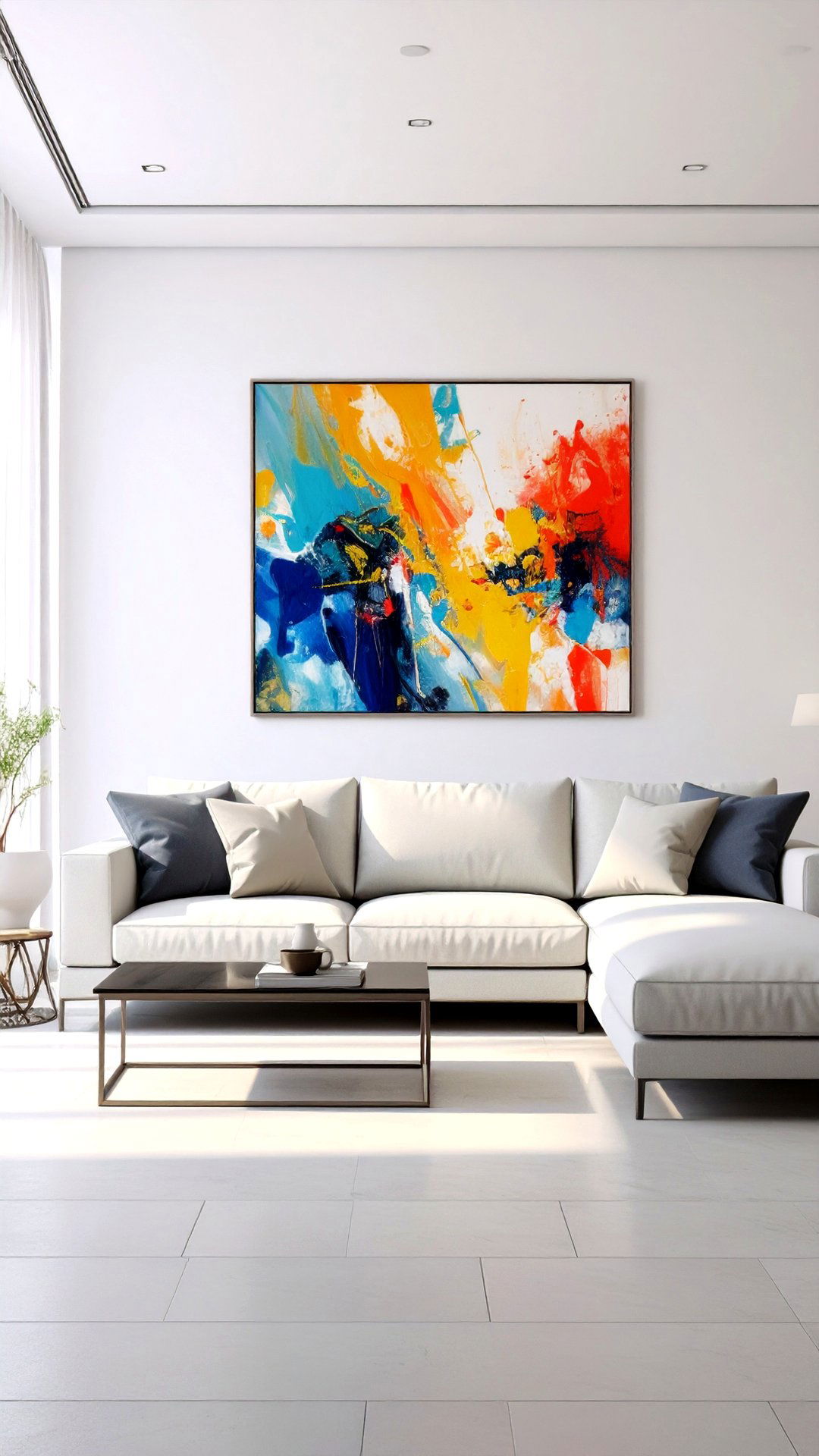
An oversized abstract painting hung intentionally off-centre above a sofa injects immediate energy and establishes asymmetrical balance by leveraging visual weight rather than symmetry. Instead of matching side tables beneath it, arrange a single marble pedestal on one side and a trio of nested stools on the other; their combined height and texture echo the canvas without copying it. Keep a sliver of blank wall on the lighter flank so the eye can rest. This tactful imbalance celebrates the artwork as a focal point while ensuring the composition feels curated, not haphazard.
2. Layer Lamps at Varying Heights for Asymmetrical Balance
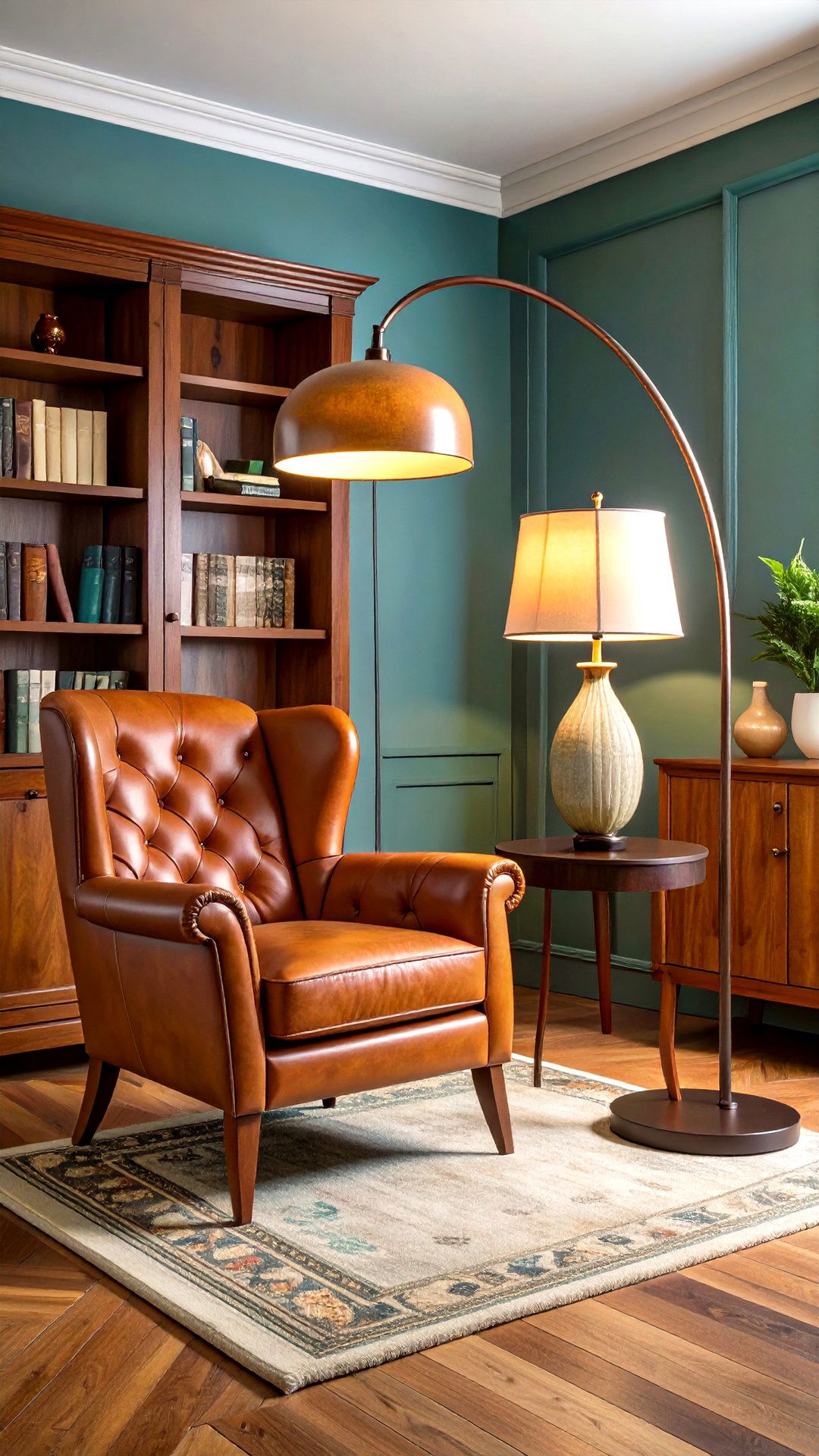
One irresistible way to weave asymmetrical balance into evening routines is through lighting tiers that glow at different levels. Picture a slim arc-floor lamp sweeping over a reading chair while a petite table lamp glows opposite on a low credenza; their divergent silhouettes spread illumination evenly without mirroring each other. Finish the tableau with a wall-mounted sconce on the lamp-less side to pull the eye back across the room. Height shifts like these create cozy, controllable light and the relaxed elegance that perfectly matched pairs can never achieve.
3. Mix Curved and Linear Seating to Achieve Asymmetrical Balance
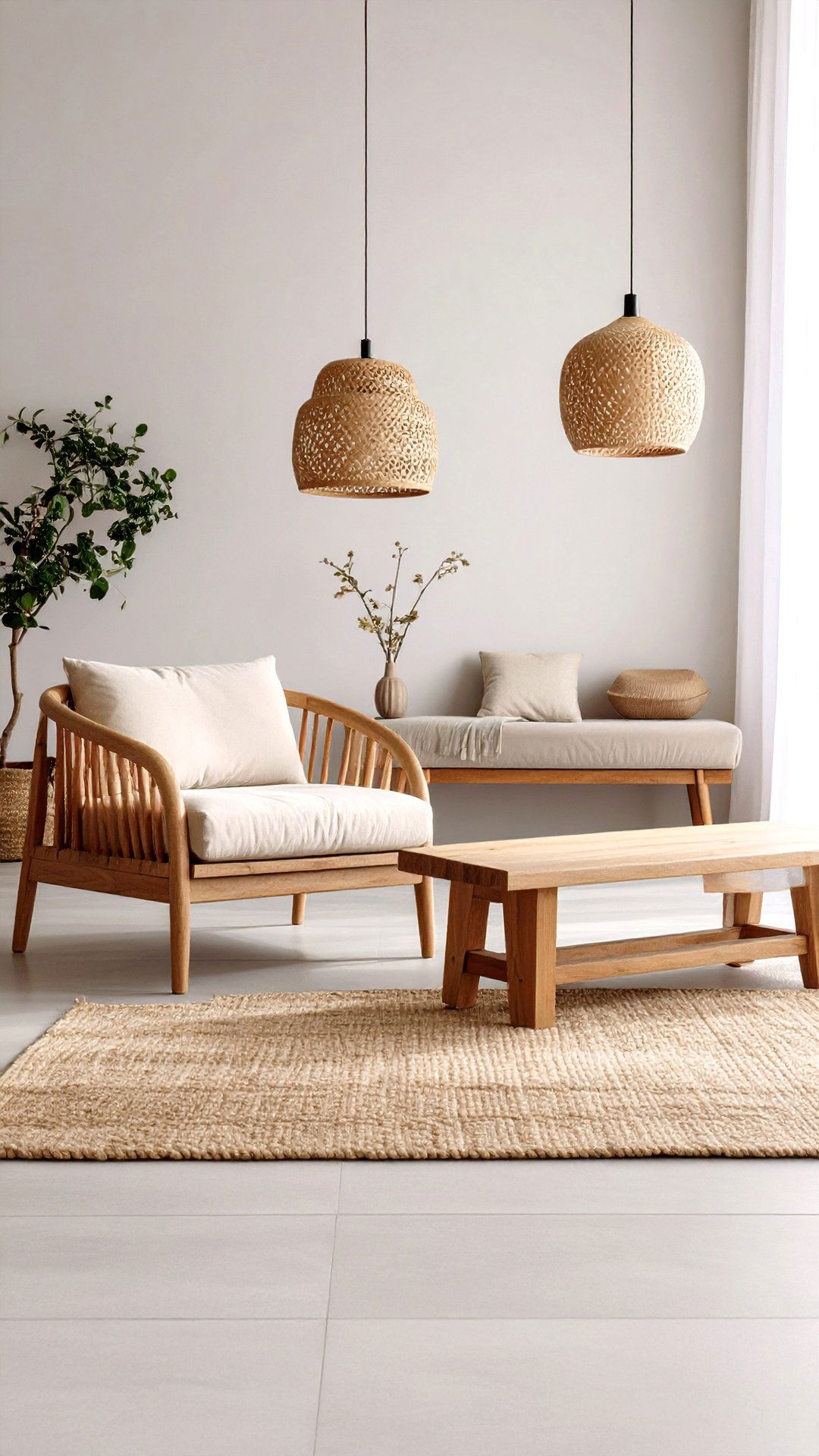
Unlike a matched sofa-and-loveseat set, combining a gently curved lounge chair with a crisp rectangular bench yields asymmetrical balance that feels both welcoming and unexpected. The sweeping chair line draws attention, while the bench’s elongated profile visually counterweights it without duplication. Anchor both pieces on a neutral rug so their shapes can sing, then add a sculptural side table near the narrower seat for extra heft. This marriage of opposing silhouettes proves that asymmetrical balance in interior design thrives on thoughtful contrast.
4. Cluster Floating Shelves for Organic Asymmetrical Balance
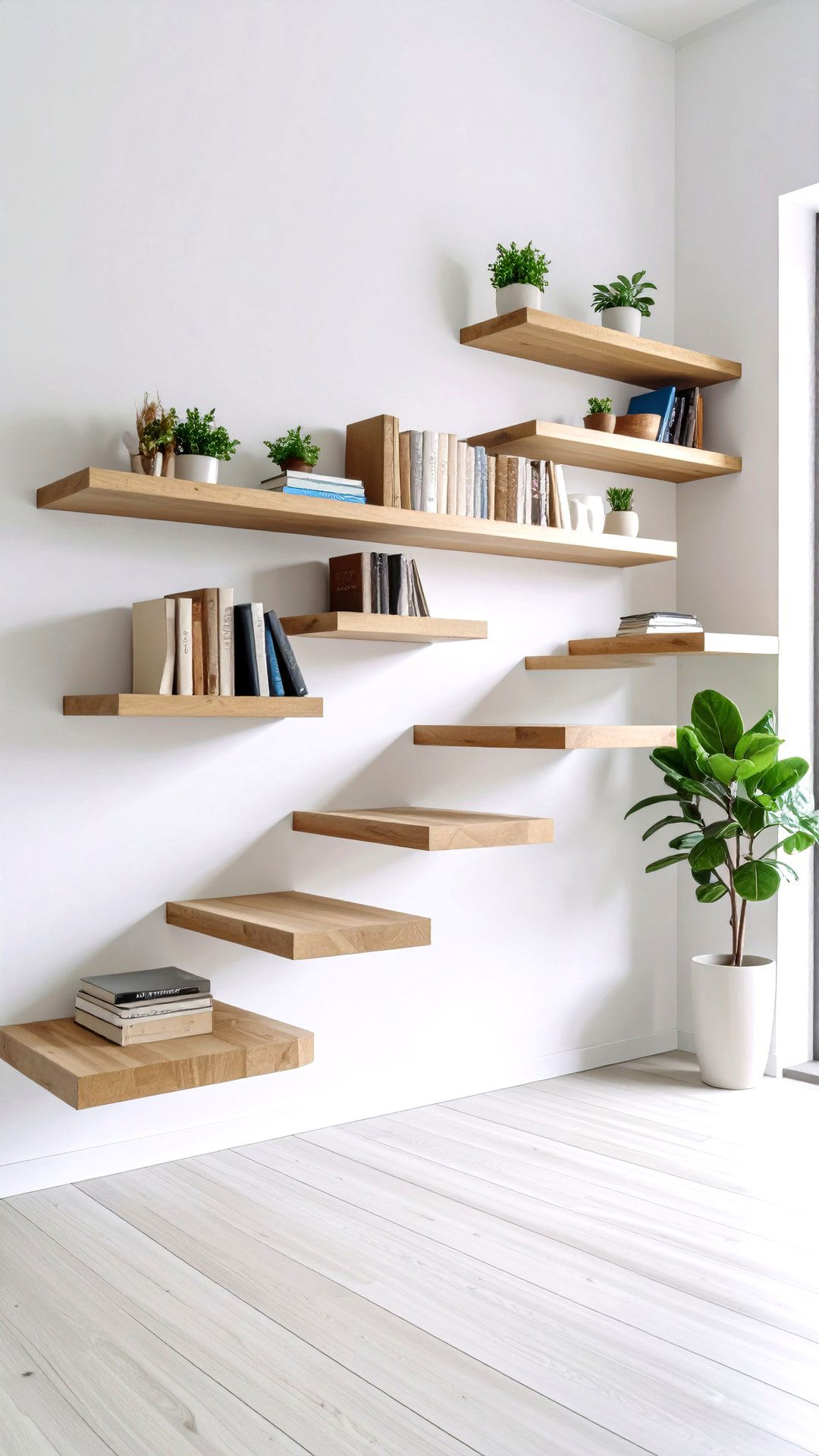
Floating shelves arranged in an irregular staircase pattern instantly demonstrate how asymmetrical balance can add movement to plain walls. Start with one long shelf near eye level to carry most of the visual load; then scatter two or three shorter planks above and beside it, offset just enough to suggest flow. Balance the cluster by placing a tall vase or leafy plant on the floor beneath the lightest corner. Unevenly distributing books, ceramics, and photos encourages exploration, turning functional storage into wall art.
5. Balance Bold Color with Textured Neutrals for Subtle Asymmetrical Balance
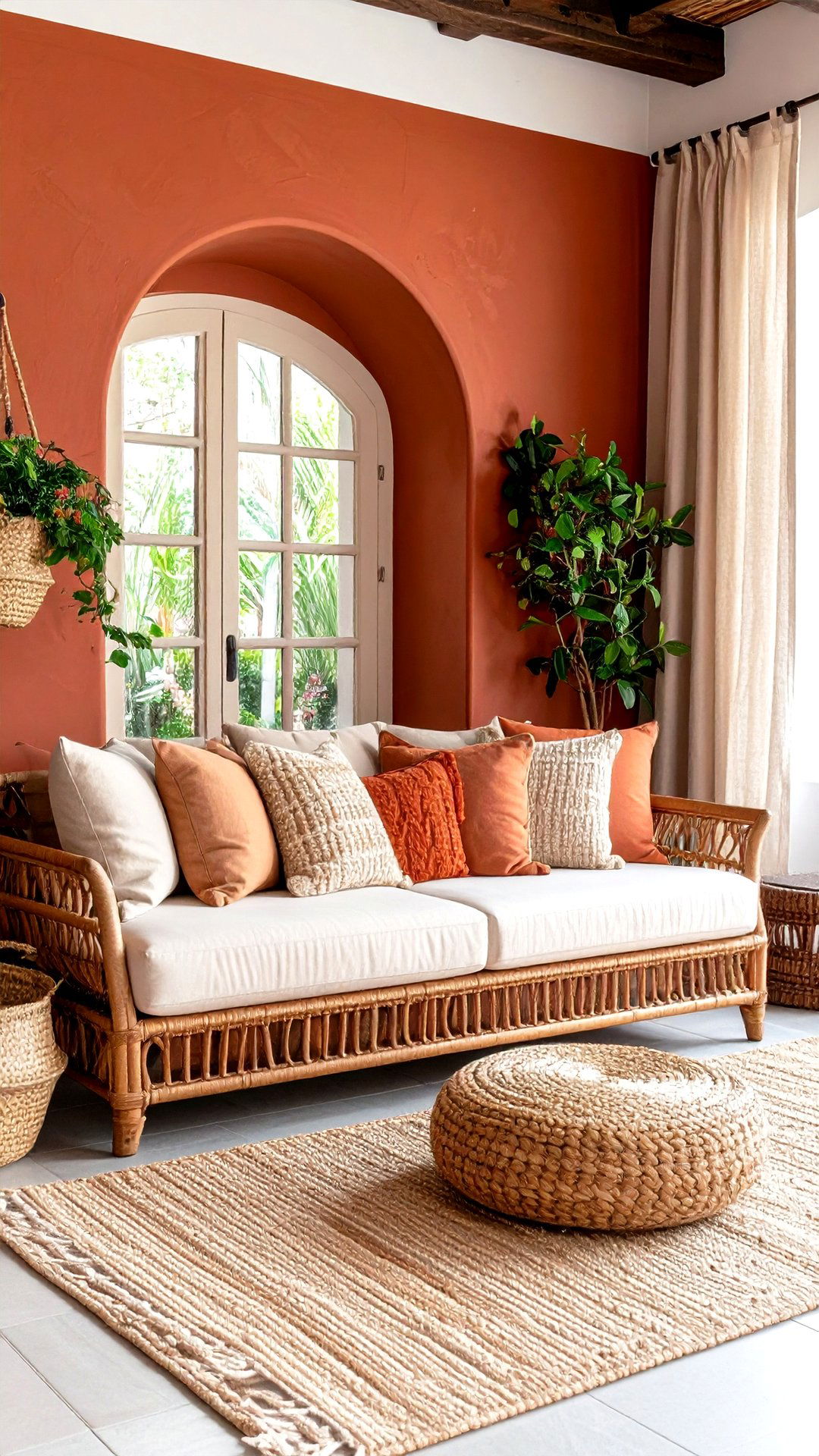
Certainly, a single wall awash in terracotta or cobalt can dominate a room — yet asymmetrical balance lets you temper that intensity without draining personality. Paint only an alcove, then weight the opposite side with richly textured neutrals: boucle pillows, rattan stools, and linen drapes. The deep hue commands attention, while tactile neutrals absorb light differently, evening out the scene. Because this principle values perceived heft over literal sameness, the room reads dynamic and sophisticated rather than simply color-blocked.
6. Slide the Rug Off-Centre to Reinforce Asymmetrical Balance

A cozy seating area gains character the moment you nudge the rug forward so its edge lines up with the coffee table but not the sofa behind. To restore asymmetrical balance, perch a substantial floor cushion or knitted pouf on the exposed strip of timber flooring. This subtle displacement highlights both texture and negative space, guiding traffic flow without resorting to conventional centering. Small, deliberate shifts often make interior design feel curated instead of staged.
7. Contrast a Tall Plant with Low Accents for Natural Asymmetrical Balance
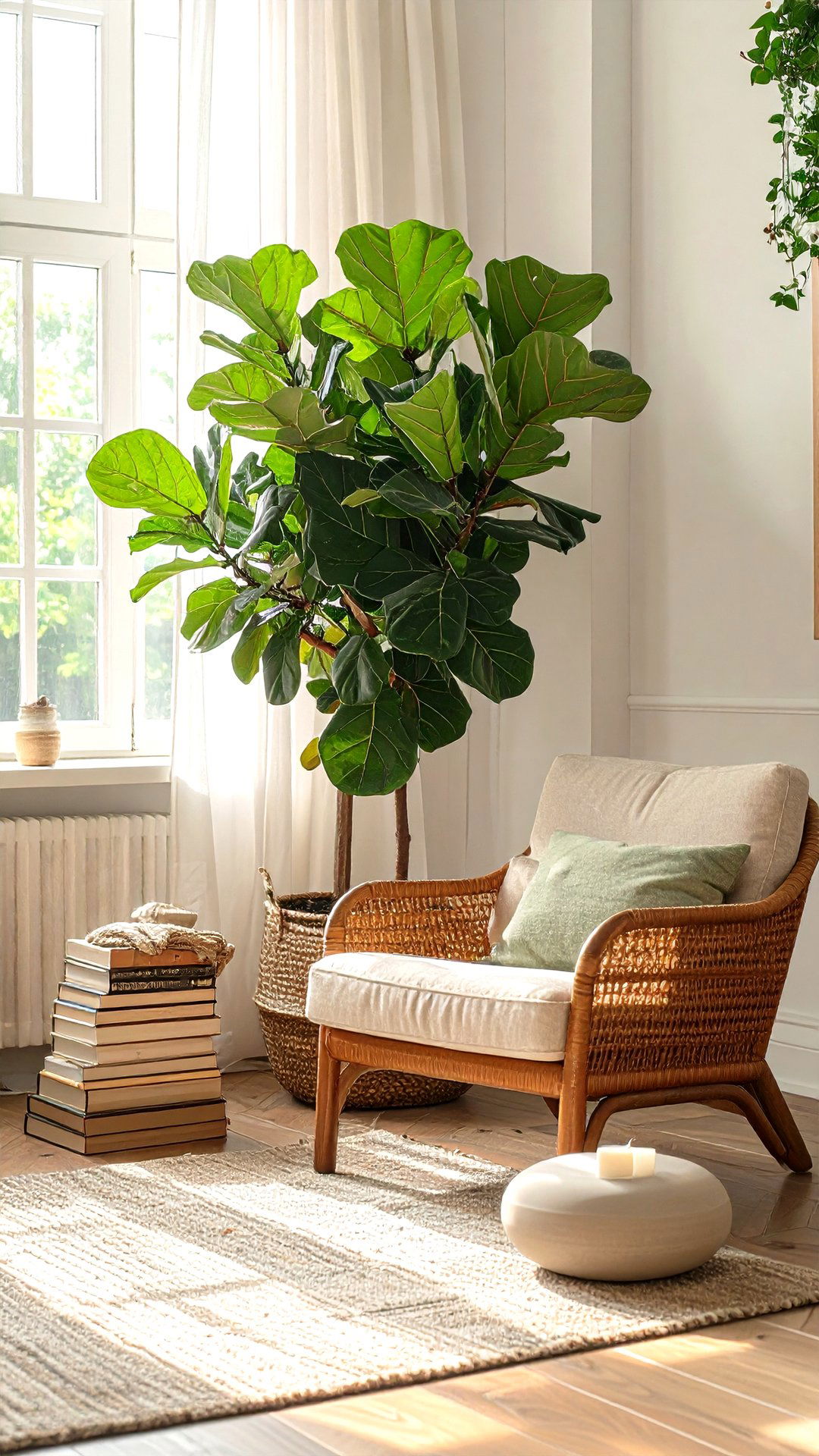
Looking for an organic route to asymmetrical balance? Introduce a statuesque fiddle-leaf fig in one corner and counterweight it with a cluster of low accents — think a ceramic stool, stacked art books, and a candle bowl — on the sofa’s far side. The plant’s vertical presence anchors the vignette, while varied heights and textures share its visual duty. Greenery becomes a living pillar rather than an afterthought, breathing life and gentle movement into the room.
8. Create a Corner Gallery Wall to Drive Asymmetrical Balance

Surprisingly, a corner often makes the best canvas for asymmetrical balance because it disrupts straight sightlines. Hang artwork on both adjoining walls, letting frames scatter upward and outward like constellations, but leave negative space at eye level on the wider wall nearby. Place a low bench beneath the emptier section to hold objects that echo colours in the pictures. Shifting densities of art and emptiness soften sharp architectural intersections and keep eyes moving.
9. Shift the Headboard Ensemble for Bedroom Asymmetrical Balance
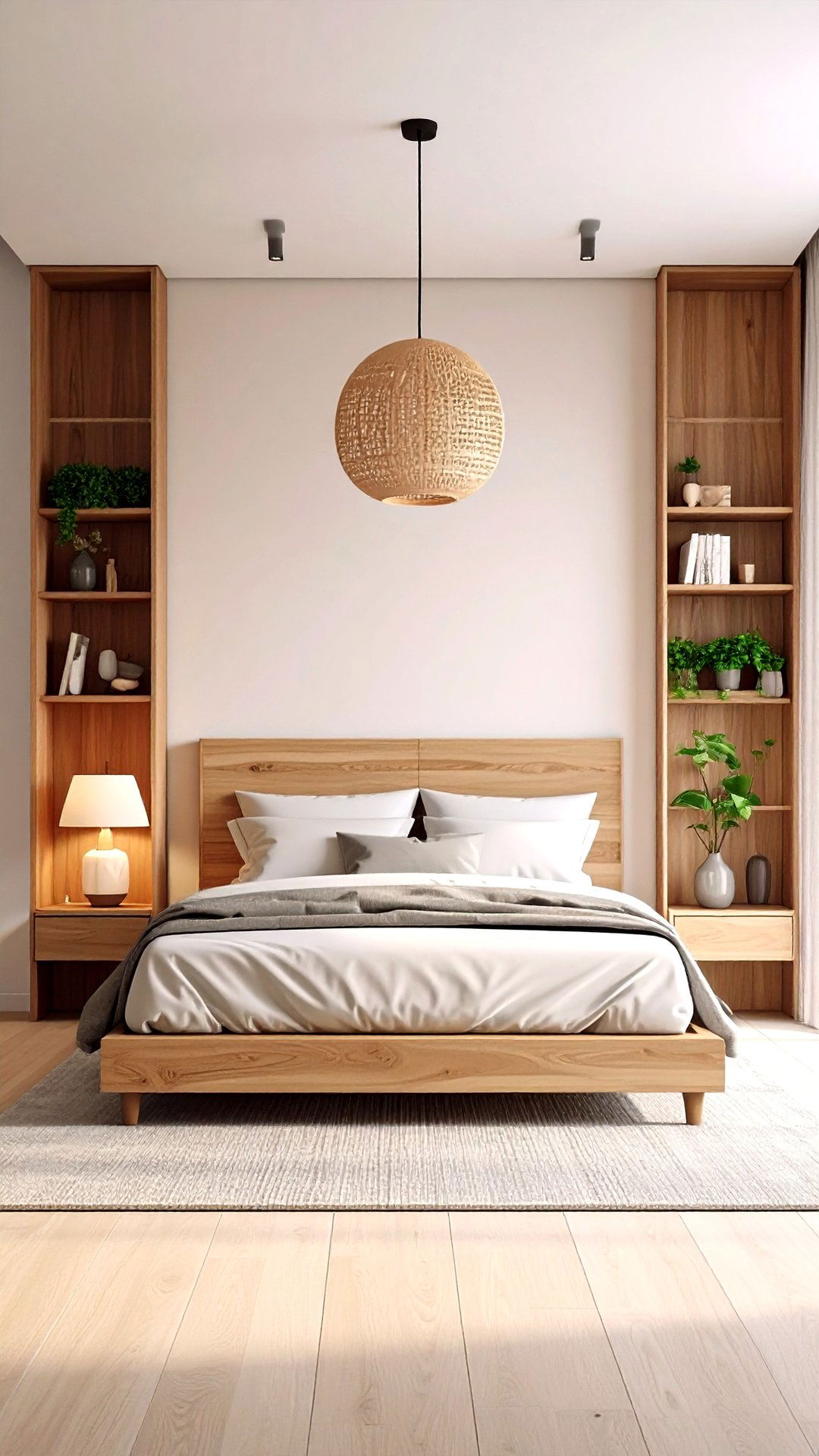
A bedroom embraces asymmetrical balance when the headboard sits slightly off-centre, flanked by different yet equally engaging companions. Anchor one side with a tall narrow bookcase full of bedtime reads; on the other, install a floating shelf and petite pendant light to maintain vertical interest without bulk. Matching sconces are optional — try a single adjustable lamp instead. The intentional lopsidedness frees you from predictable night-stand symmetry and leaves room for art or greenery above.
10. Stagger Kitchen Pendants for Functional Asymmetrical Balance
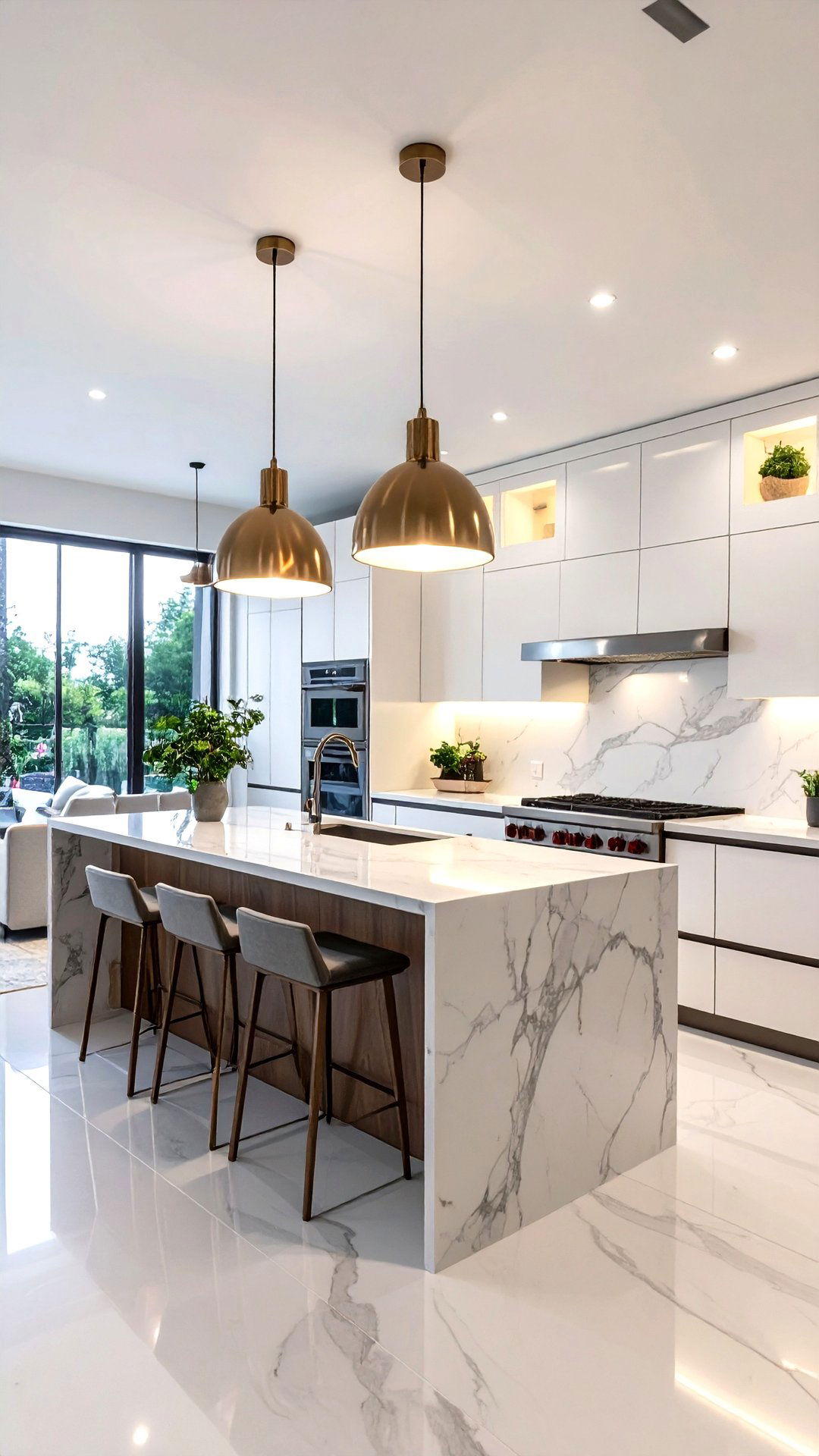
Kitchen islands beg for pendant lights, yet hanging them in a perfect row can look flat. Owing to asymmetrical balance, set two dome pendants over one end for prep tasks and let a slimmer spotlight hover nearer the sink. Varying shade shapes and heights further separates visual weights while still bathing work zones in light. This spirited arrangement subtly zones activities without walls, blending function with artistry in the busiest room.
11. Dress the Staircase Wall Unevenly for Dramatic Asymmetrical Balance
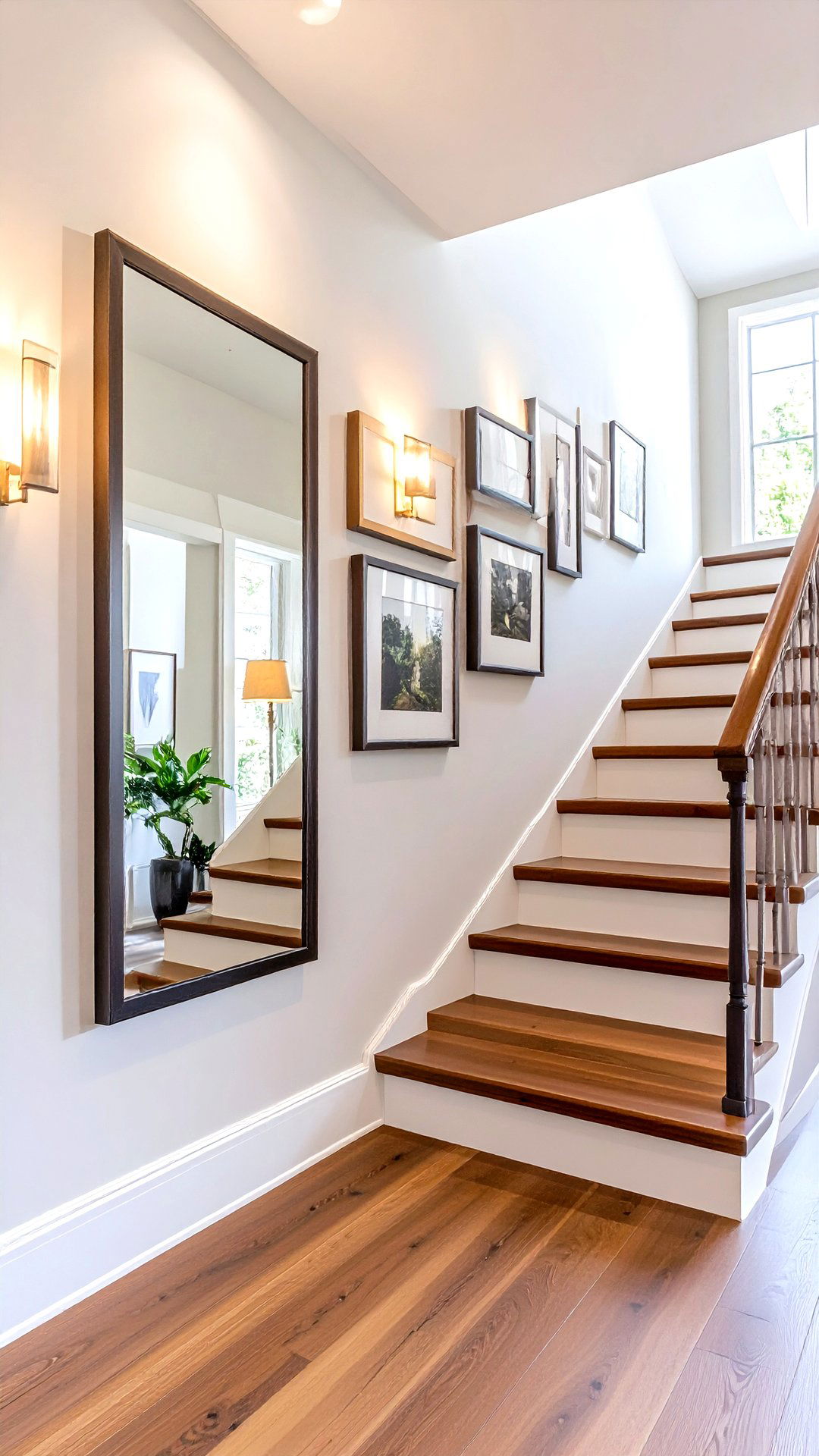
As risers climb, so should your eye, and asymmetrical balance makes that journey compelling. Position a large statement mirror adjacent to the lower steps, then trail a trio of progressively smaller prints along the upper flight. Add a slender picture light above the tiniest frame to reclaim emphasis. The staircase’s diagonal already encourages movement; uneven décor amplifies it, transforming everyday ascents into a miniature gallery stroll.
12. Offset Bathroom Mirrors and Sconces for Spa-Like Asymmetrical Balance
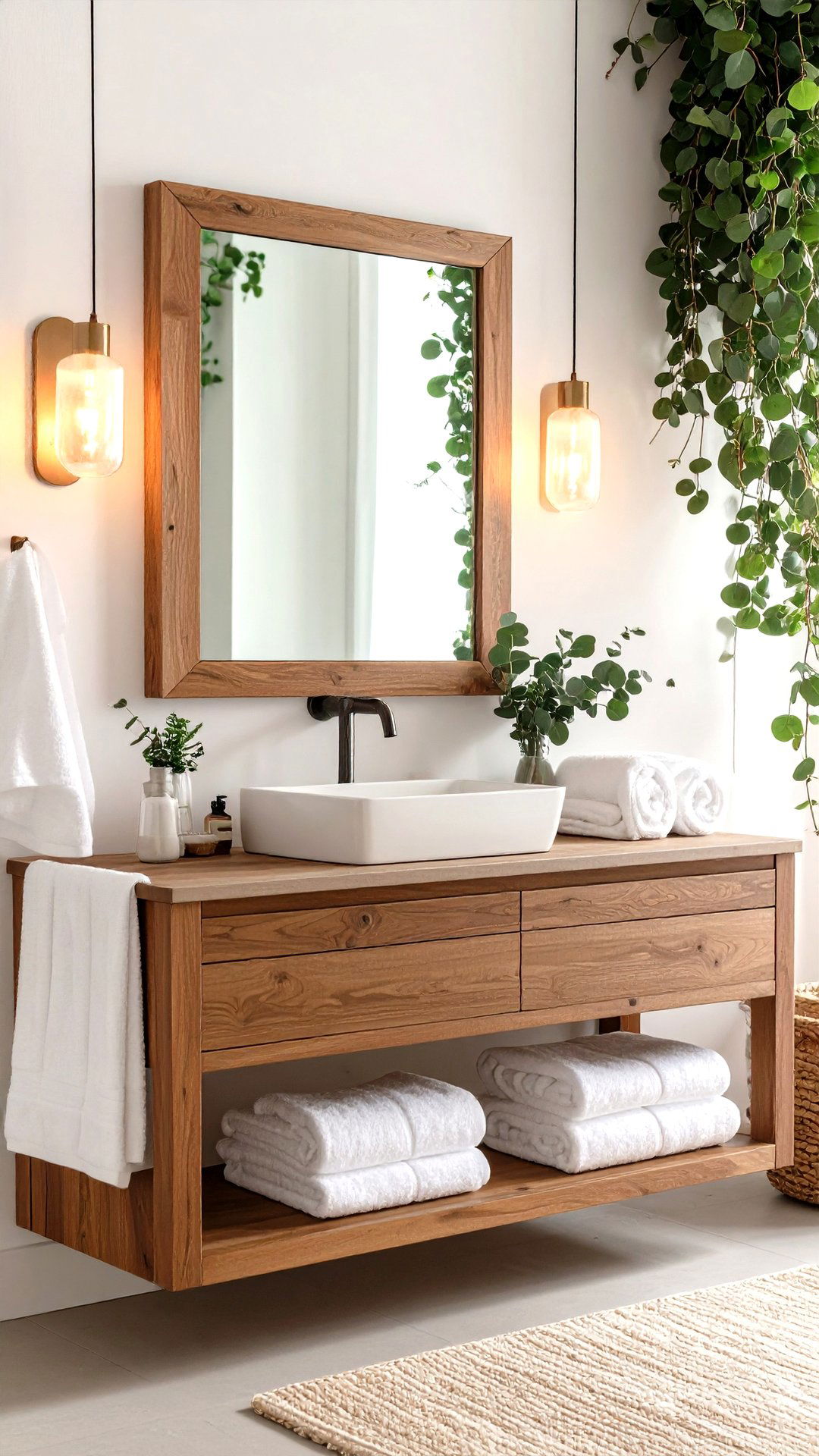
Bathrooms thrive on symmetry for plumbing reasons, but you can still embrace asymmetrical balance by nudging a wide mirror toward one side of the vanity and pairing it with a single sculptural sconce on the narrower edge. Counter the shift by centering soap dispensers, rolled towels, or eucalyptus sprigs on the broad stretch of countertop. Light spreads softly yet dynamically, making a utilitarian zone feel boutique-worthy.
13. Pair Vintage and Modern Pieces for Eclectic Asymmetrical Balance
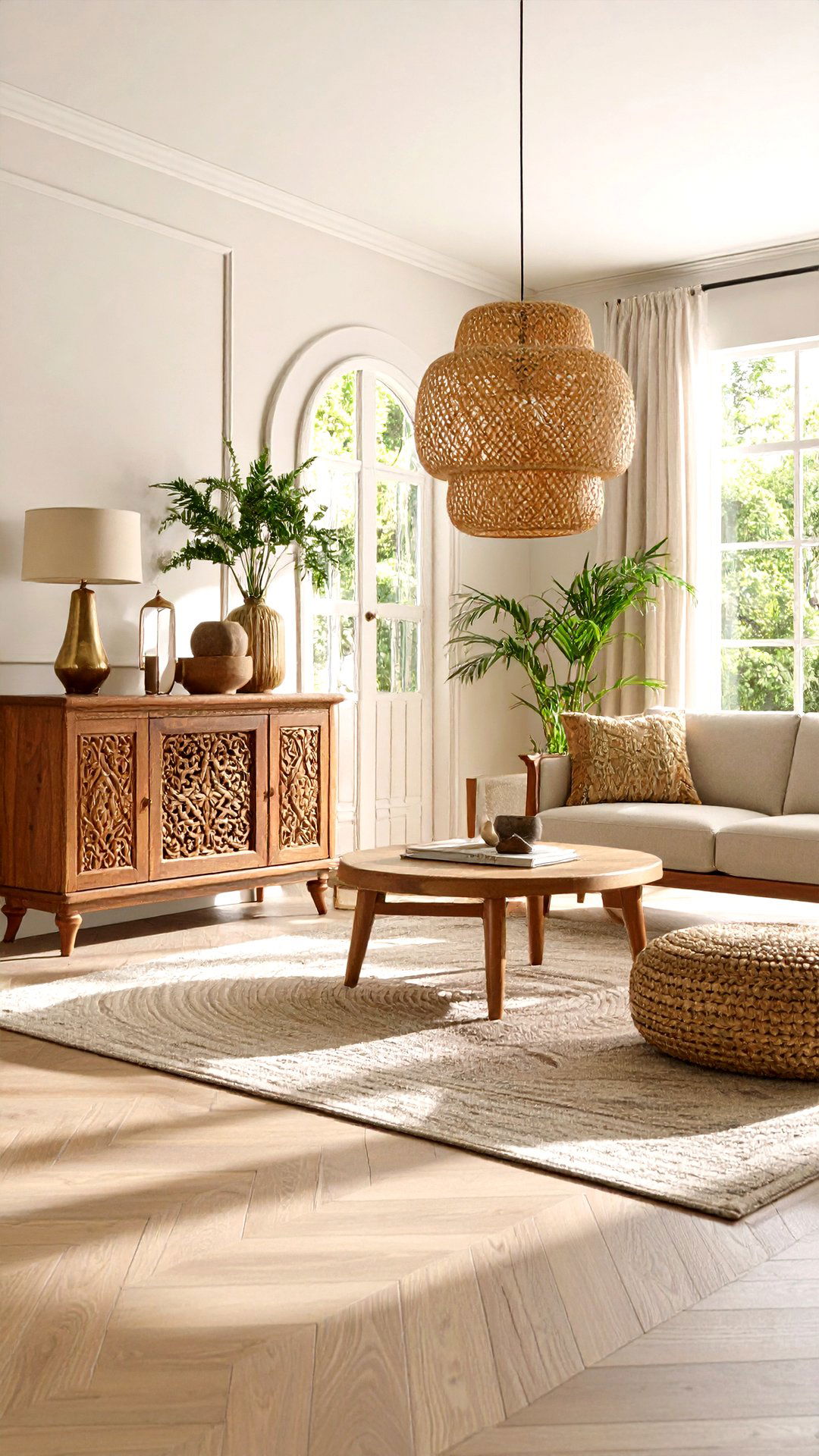
Mixing eras automatically invites asymmetrical balance because historical heft and modern crispness rarely share identical profiles. Let a carved antique console claim one side of the room, then balance its gravity with a minimalist metal floor sculpture on the diagonal. Tie them together through a shared accent colour or finish so contrast feels intentional. The dialogue between old and new proves that imbalance, done thoughtfully, tells richer stories.
14. Use Mismatched Dining Chairs for Playful Asymmetrical Balance
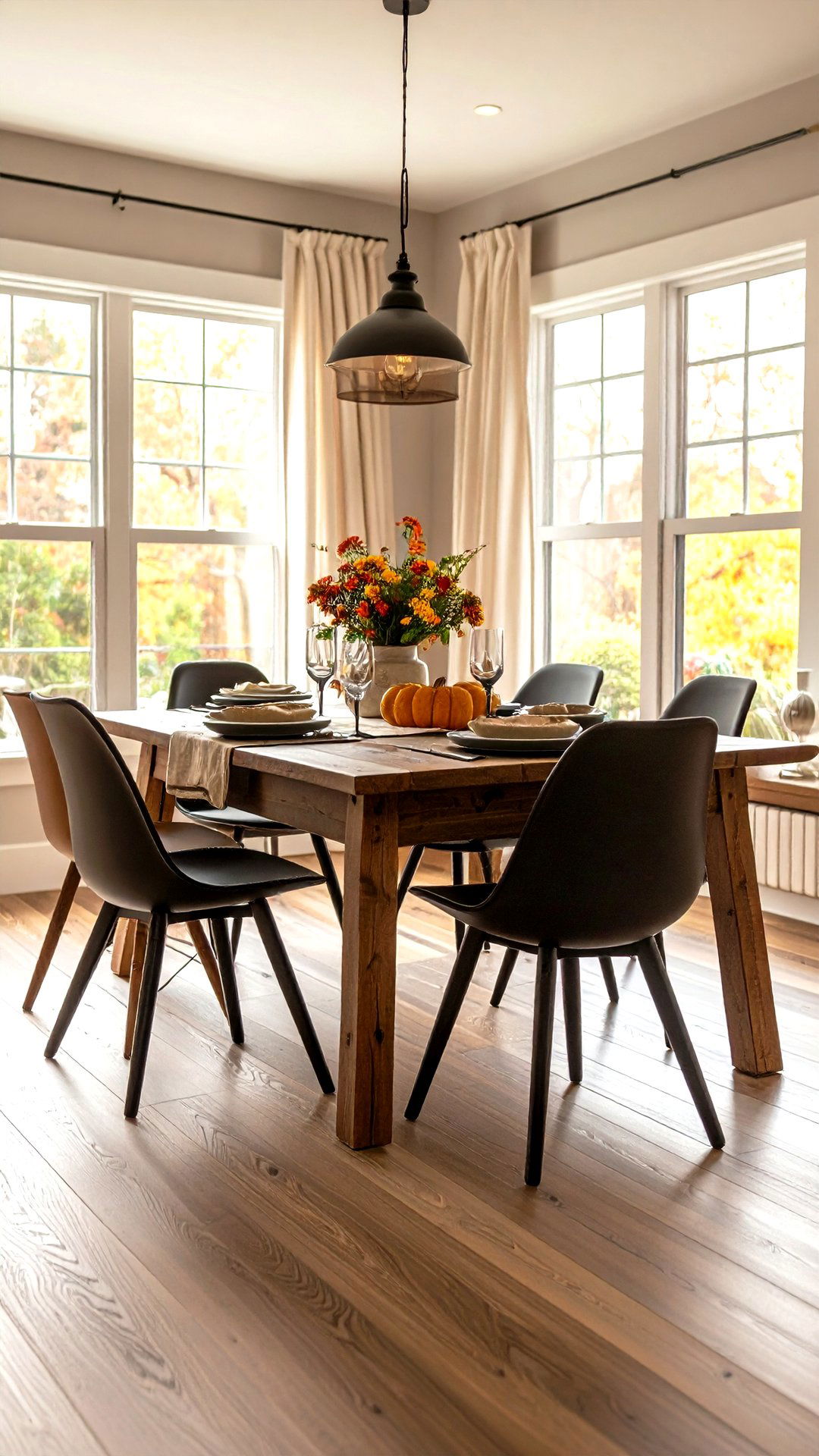
Weeknight dinners get livelier when guests sit in deliberately mismatched chairs that still cooperate through height, palette, or material. Imagine four sleek black side chairs opposite a single oatmeal-linen captain’s chair; differing silhouettes layer interest, yet the unified colours secure asymmetrical balance. Reinforce equilibrium with a linear bench near a window for both breathing room and seating. The result feels inclusive and thoughtfully collected.
15. Counter a Chunky Sectional with Slender Floor Lamps
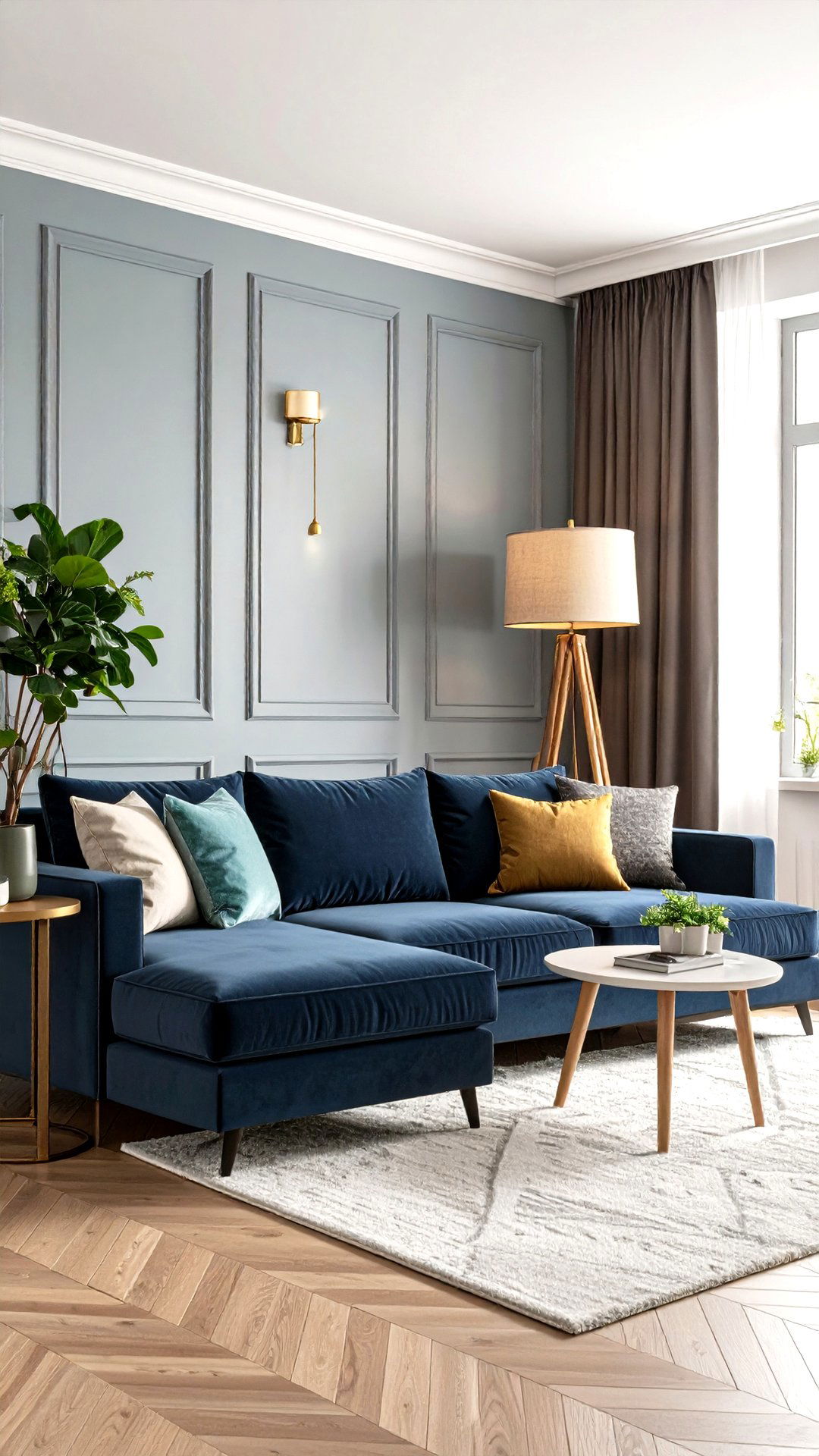
When a deep L-shaped sectional monopolises one corner, slender floor lamps or a tall tripod plant stand can lighten the opposite flank, restoring asymmetrical balance without introducing another bulky piece. Choose lamp shades in a bold hue pulled from throw pillows to knit the sides together. The airy accents lend verticality and brightness, rescuing even the most domineering seating arrangement.
16. Anchor an Entry Console with an Oversized Mirror
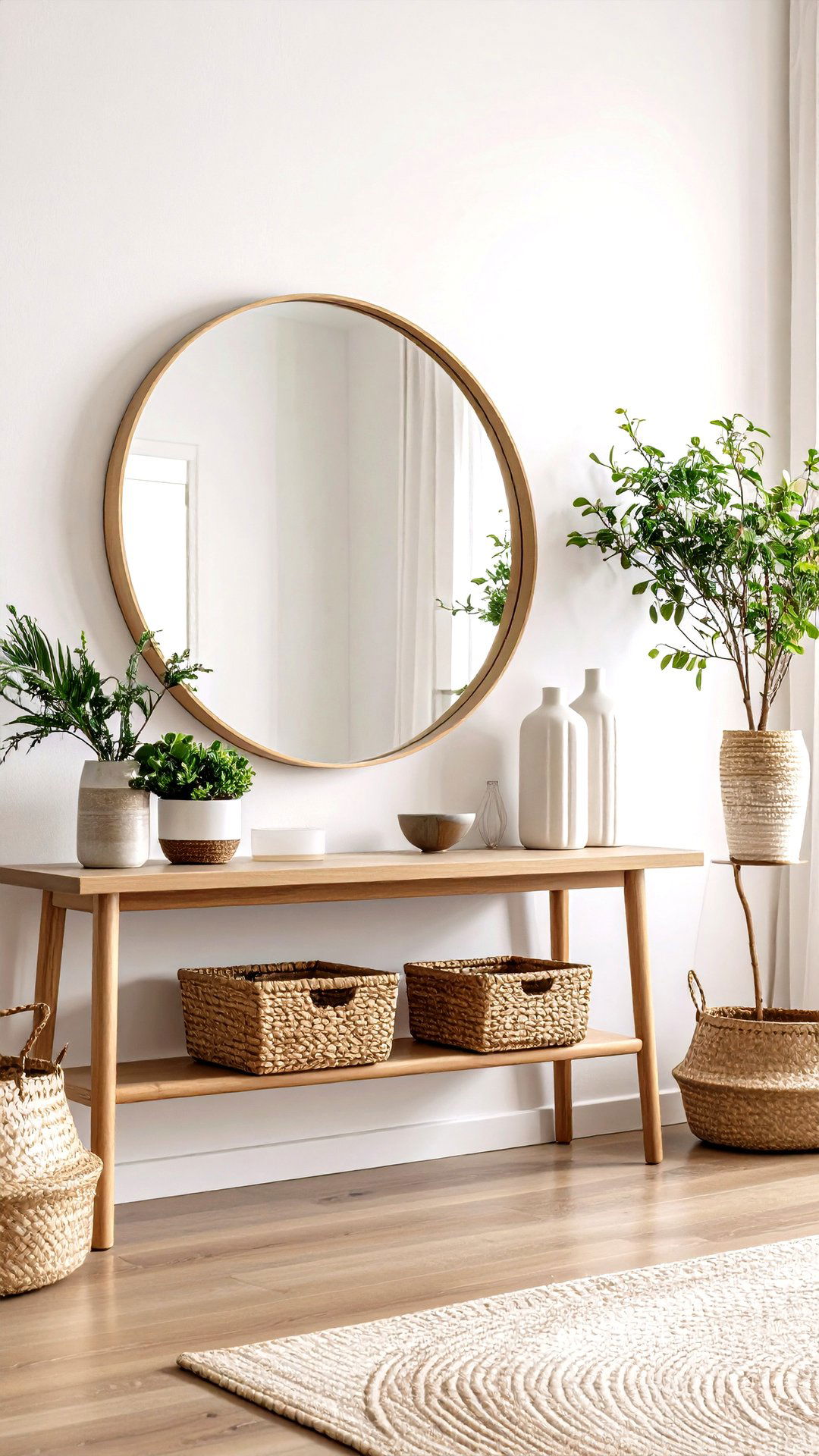
First impressions matter, and asymmetrical balance ensures your entry reads curated, not cluttered. Lean an oversized round mirror slightly off-centre above a slim console and place two woven baskets beneath the lighter side. A dramatic branch arrangement on the console’s heavier end echoes the mirror’s diameter. Visitors absorb a vignette that feels artful and welcoming from the very first step indoors.
17. Run Ceiling Slats Off-Axis for Architectural Asymmetrical Balance

Ceiling treatments seldom take centre stage, yet a band of wooden slats starting two feet off one wall and stopping shy of the opposite side instantly signals architectural confidence. Their linear rhythm introduces asymmetrical balance overhead, leaving a clean strip of painted ceiling to breathe. Offset their strong horizontal weight below with a vertical bookshelf or drapery panel, creating immersive harmony.
18. Layer Window Drapes Heavily on One Side for Cozy Asymmetrical Balance
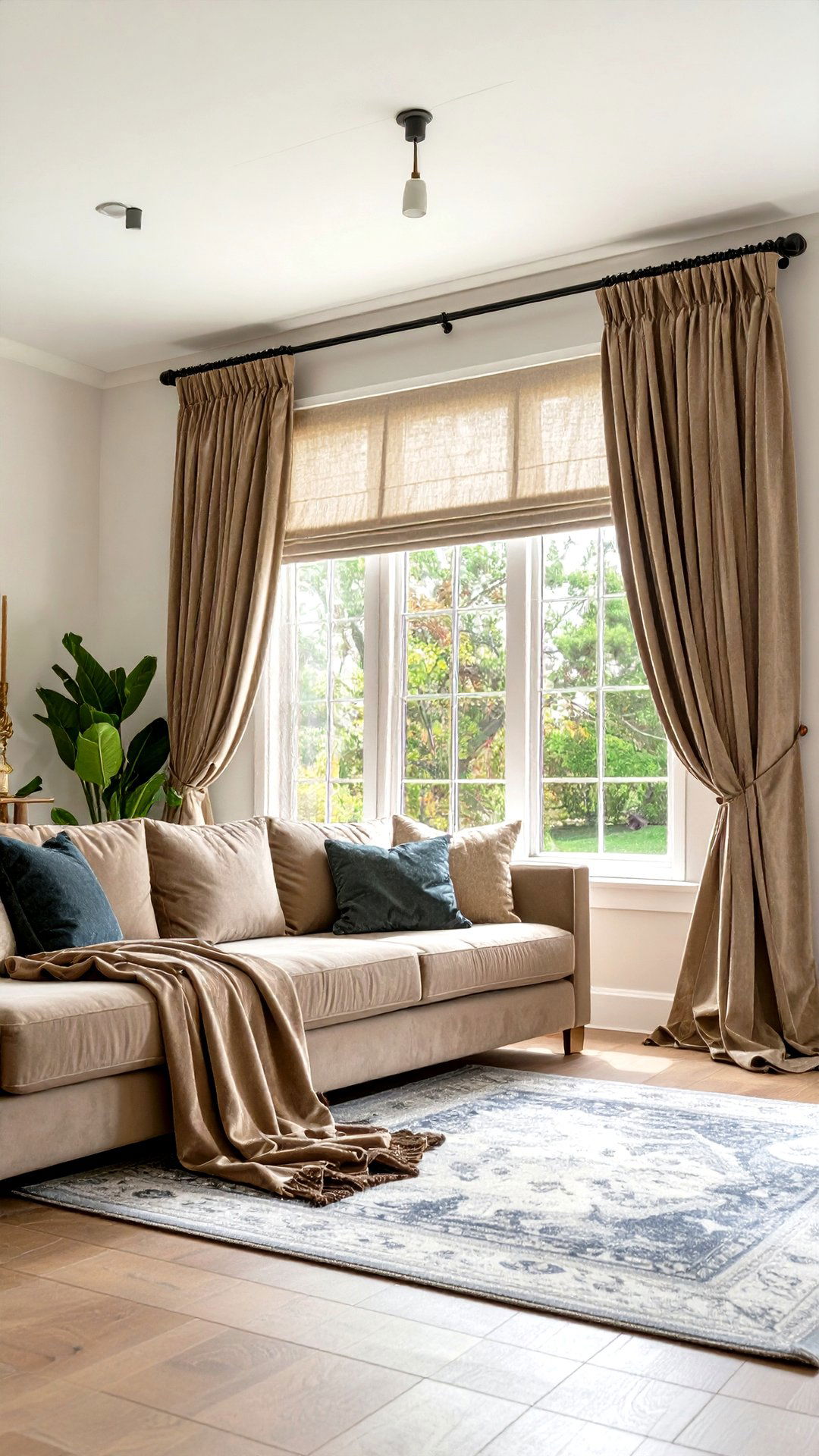
Although windows naturally anchor walls, asymmetrical balance invites textile play. Hang double-width drapes stacking fully on just one side of the glass while a simple linen shade covers the remainder. Plush pleats supply visual weight, offset by the shade’s airy translucence. Echo the drape colour elsewhere — perhaps in a throw — to bridge sides, delivering drama without sacrificing daylight.
19. Let Cascading Plants Create Biophilic Asymmetrical Balance
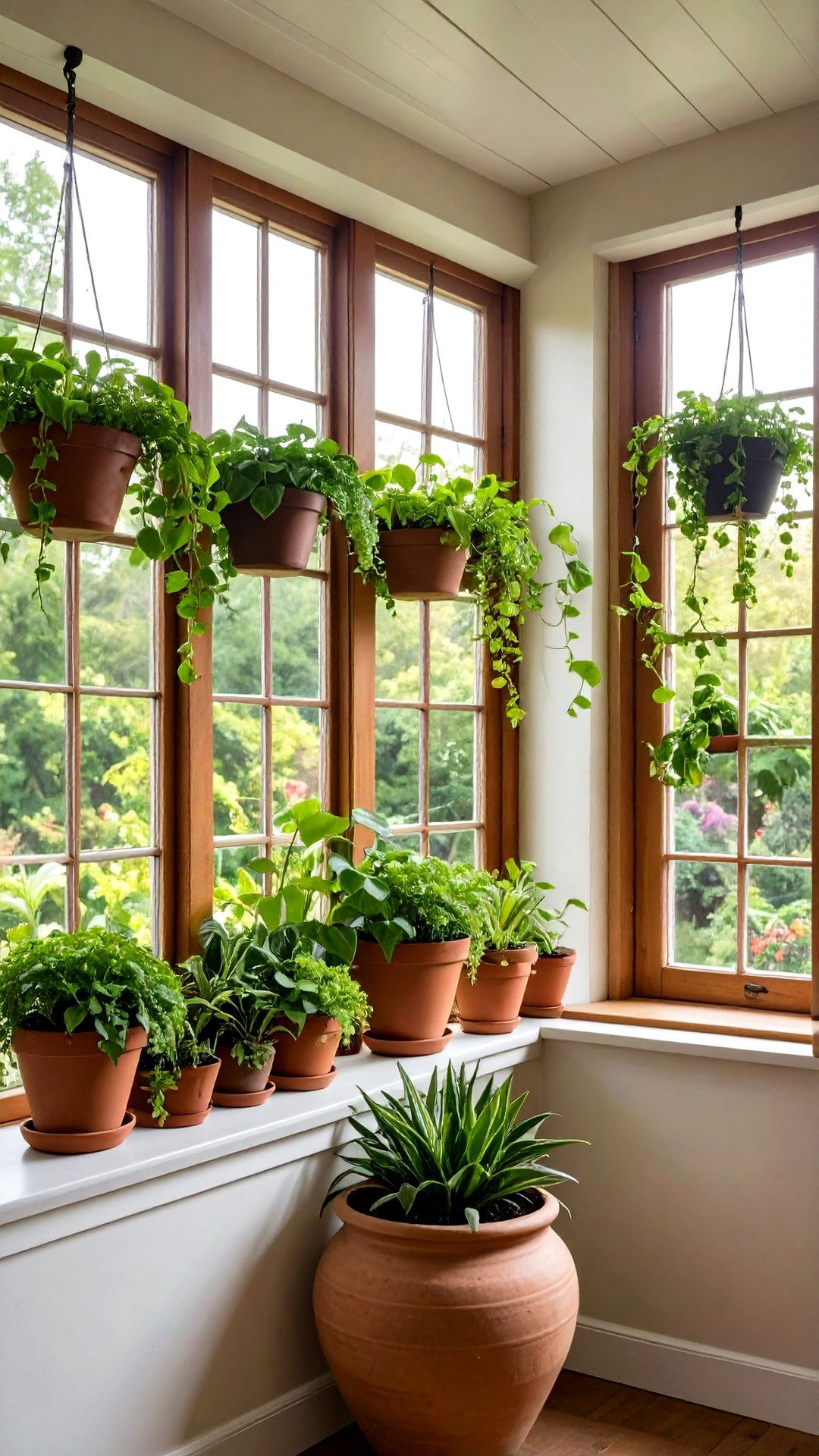
To soothe the soul, asymmetrical balance can lean on nature’s unpredictability. Suspend cascading pothos planters at staggered heights along one half of a bay window, grounding them with a substantial ceramic crock holding a snake plant nearby. Negative space on the alternate side lets foliage flow visually like a waterfall, layering lush texture while keeping the room grounded.
20. Contrast Stone and Velvet Textures for Tactile Asymmetrical Balance
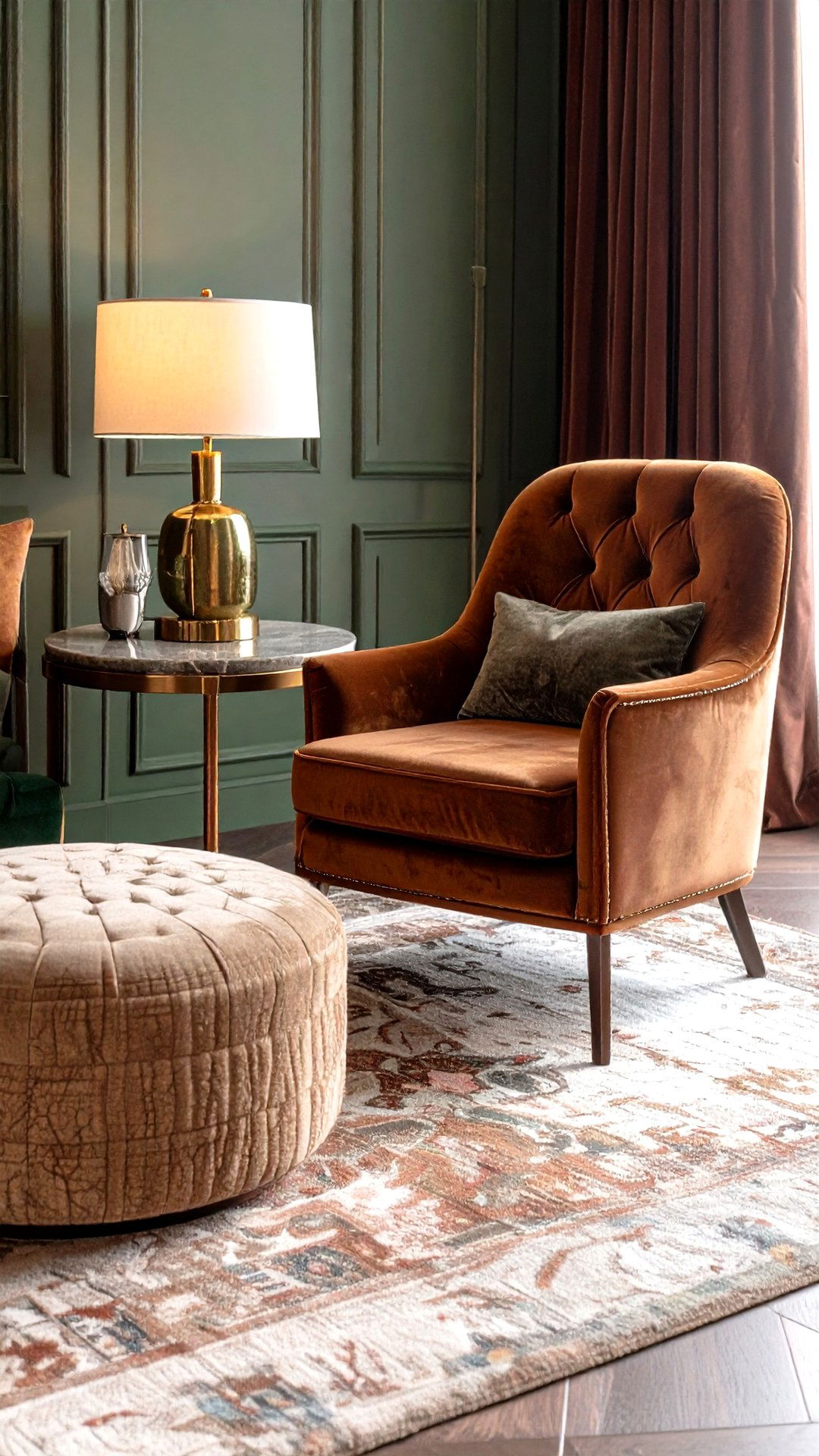
When materials speak, asymmetrical balance listens. Position a hefty limestone side table beside a velvet-clad accent chair on one end of a seating cluster, then counter that tactile duo with a jute ottoman and sleek metal lamp on the other. Stone and velvet radiate depth, while jute and metal act as light foils, turning disparate surfaces into a cohesive design melody.
21. Cluster Color Pops in One Zone for Graphic Asymmetrical Balance
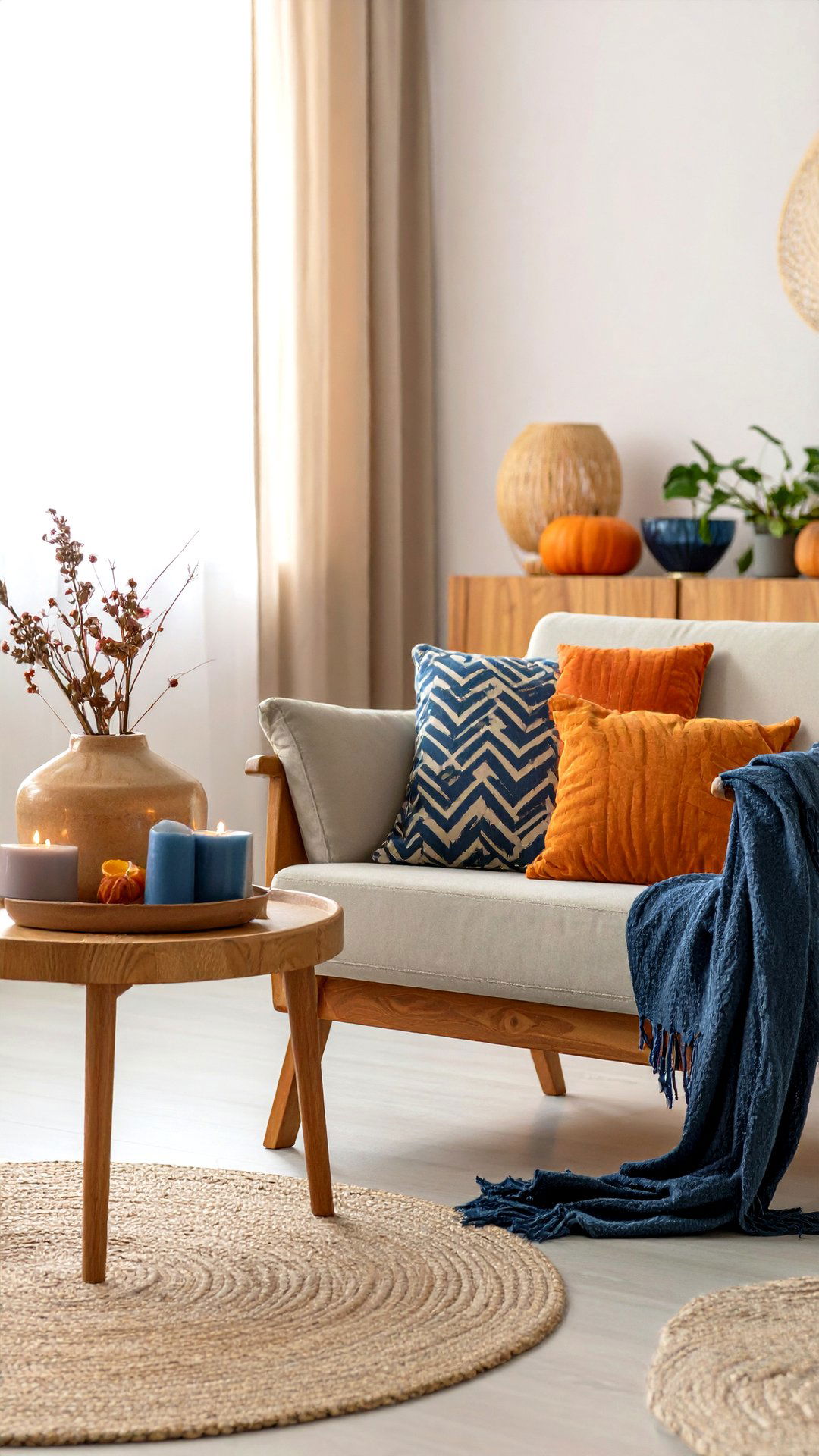
Certainly, saturated colours attract attention first, so clustering bright accessories in one concentrated zone cements asymmetrical balance quickly. Gather citrus-hued vases, cobalt candles, and patterned cushions onto a single armchair and side table, leaving the rest of the room neutral. The vivid corner gleams like a bouquet, while wood and beige elsewhere steady the scene — and you can refresh the cluster seasonally without repainting.
22. Mix Loud Patterns with Solid Upholstery for Harmonious Asymmetrical Balance
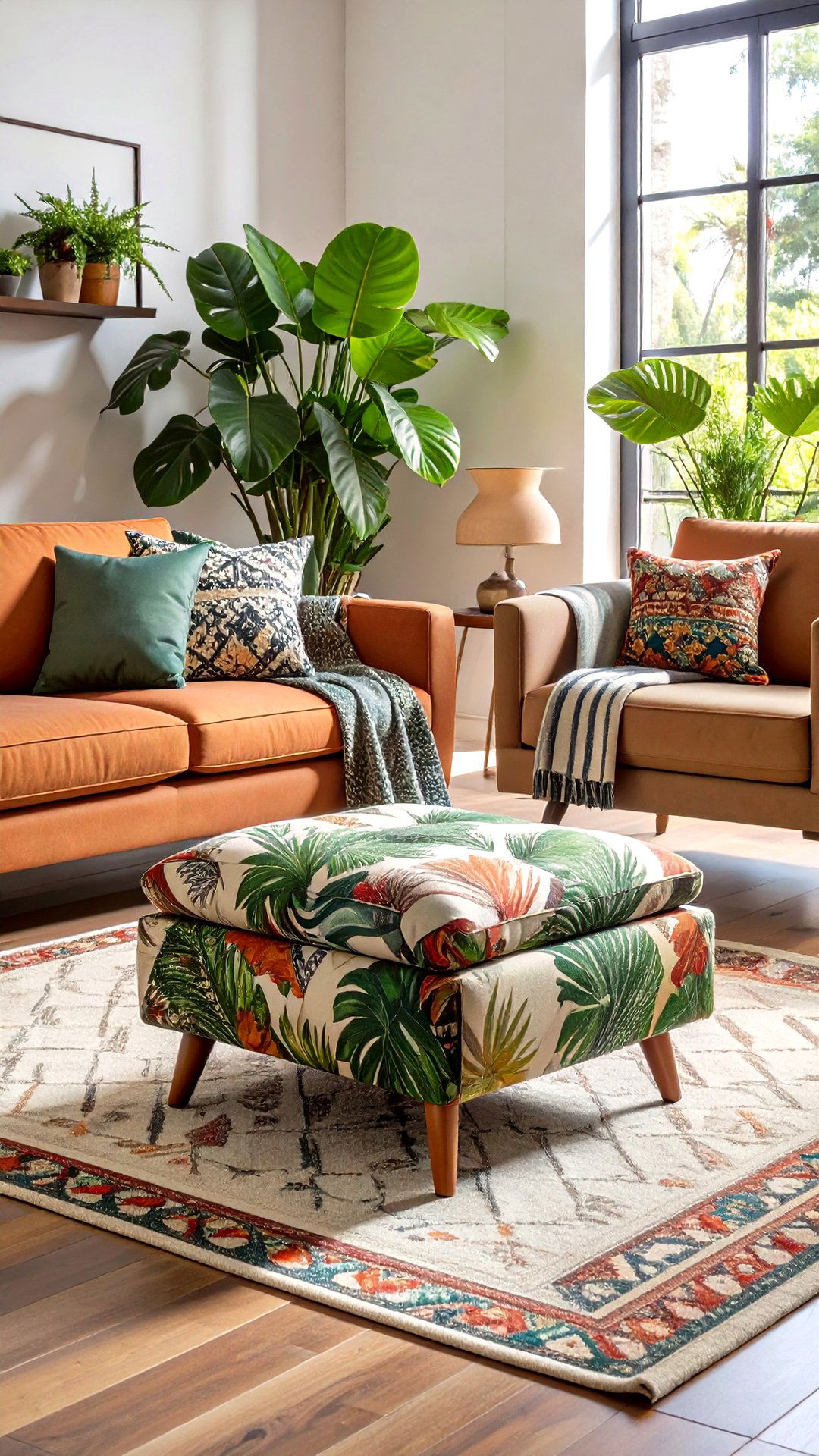
Patterns can overwhelm unless thoughtfully balanced. Choose a bold tropical print for an ottoman and temper it with solid earth-toned upholstery on surrounding seating. To hold the patterned piece in place, drape a subtle striped throw over the chair opposite. Asymmetrical balance disperses the print’s visual weight, letting adventurous textiles shine without turning the space into a theme park.
23. Reserve Open Floor Space to Counter Heavy Furnishings
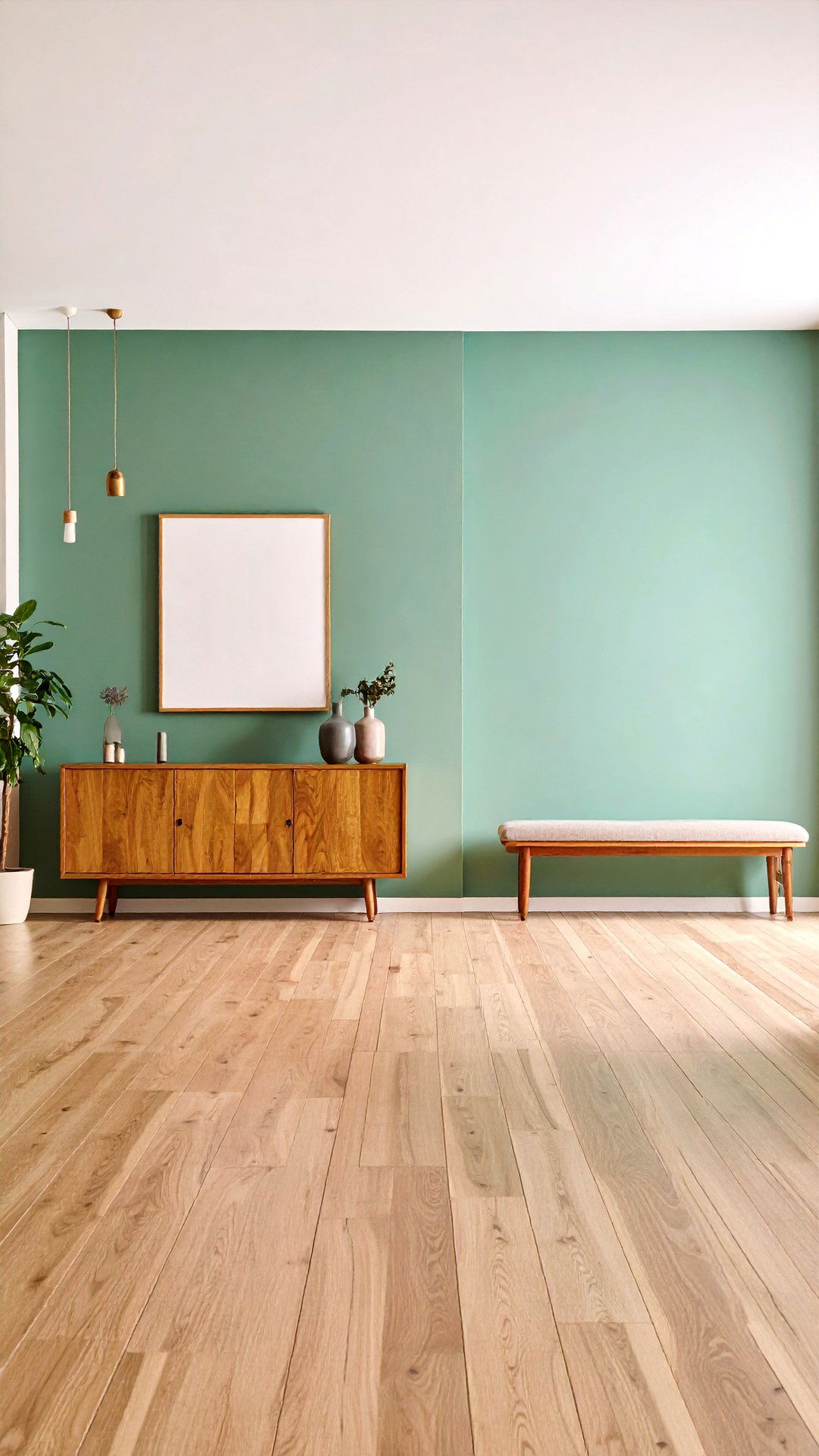
Sometimes space itself carries weight. After placing a hefty sideboard and large art cluster along one wall, resist filling the opposite side; instead, leave generous open floor or outline it with a slim bench. The negative area counterbalances bulk, delivering minimalist asymmetrical balance that doubles as yoga or play space and proves restraint is a potent design choice.
24. Flank a Tall Bookcase with Low Seating for Library-Style Asymmetrical Balance
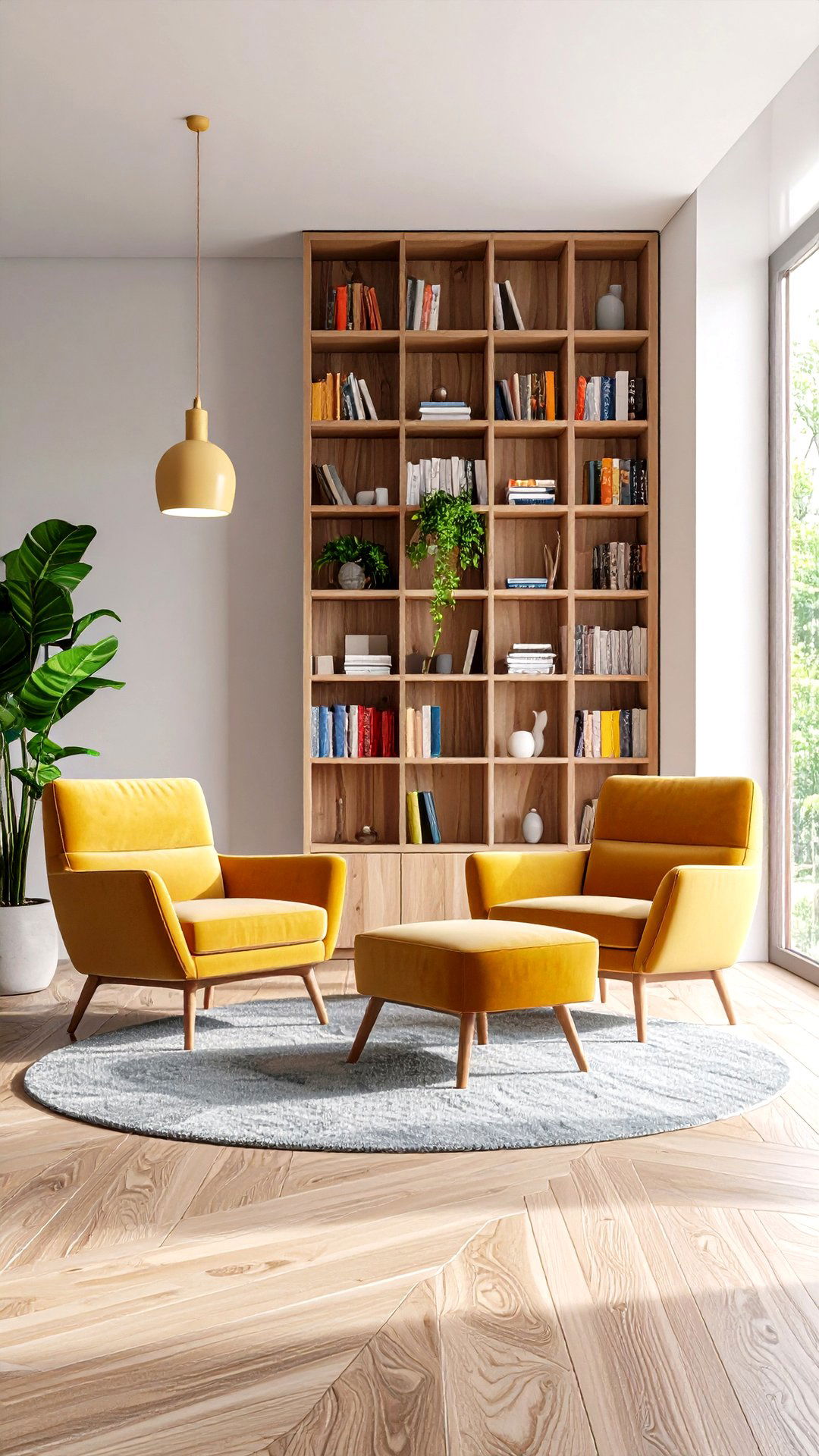
A freestanding bookcase packed with colour-coded titles draws serious attention, yet asymmetrical balance keeps it from overpowering by tucking two low armless lounge chairs on the adjacent wall. Their horizontal span neutralises the book tower’s vertical thrust, while an area rug linking both zones ties the composition. The room stays inviting and intellectually rich.
25. Hang a Sculptural Light Cluster Off-Centre for Statement Asymmetrical Balance
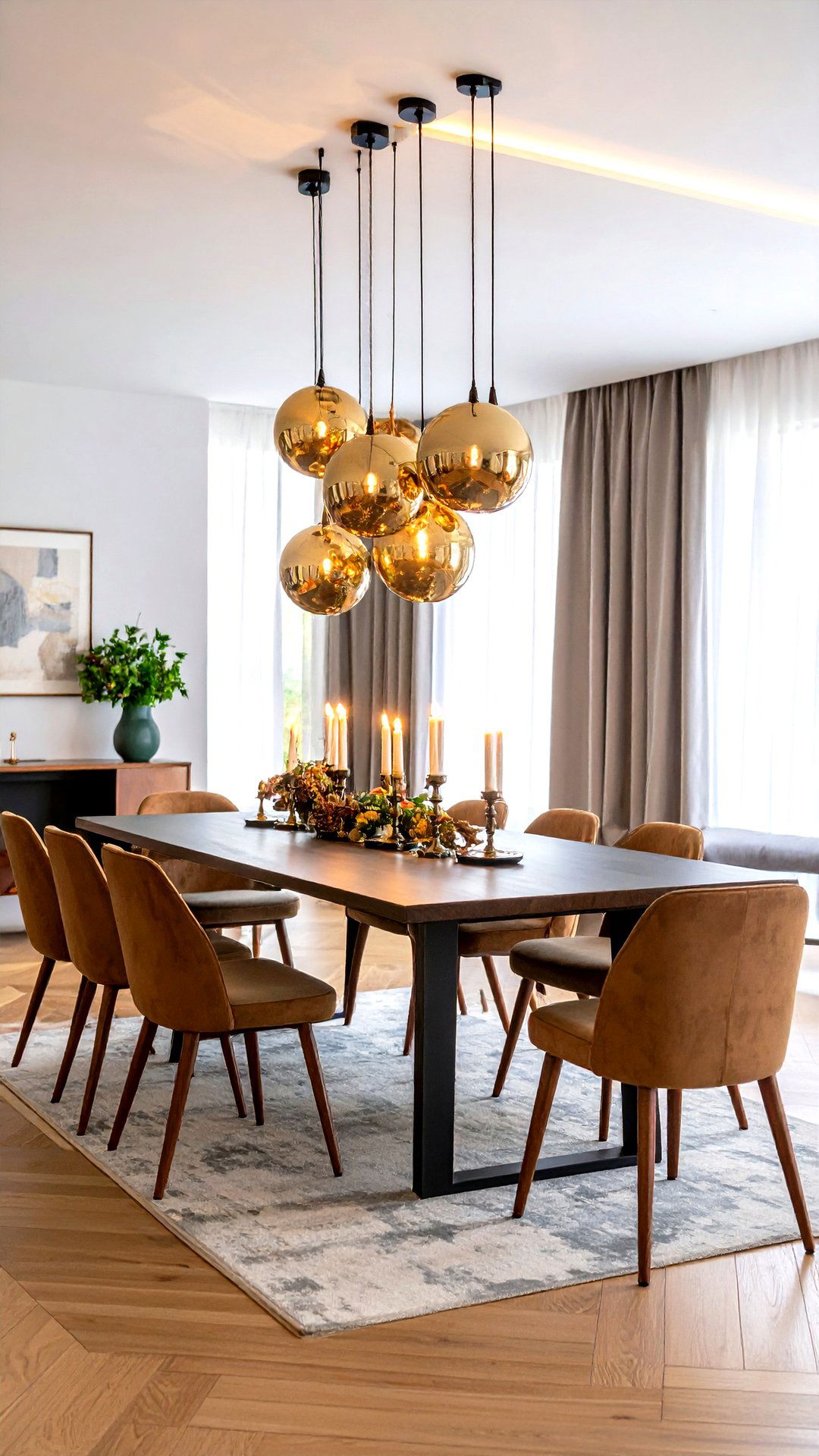
Cap your exploration of asymmetrical balance by installing an arresting cluster of pendant globes that drifts deliberately off the dining table’s centreline. Mirror the globes’ metallic finish in a tray of candleholders on the opposite side of the tabletop to level out shine and mass. The resulting dialogue between light and reflection energises dinners and proves this principle is more a design philosophy than a mere trick.
Conclusion:
Embracing asymmetrical balance is less about breaking rules and more about writing fresher, personal ones. Whether you offset art, layer lighting, or let plants tumble freely, each idea above shows how carefully weighted differences usher in movement, character, and harmony. By allowing rooms to breathe and flex, asymmetrical balance aligns perfectly with 2025’s creative, sustainability-minded design landscape, ensuring spaces feel timelessly expressive and deeply lived-in.



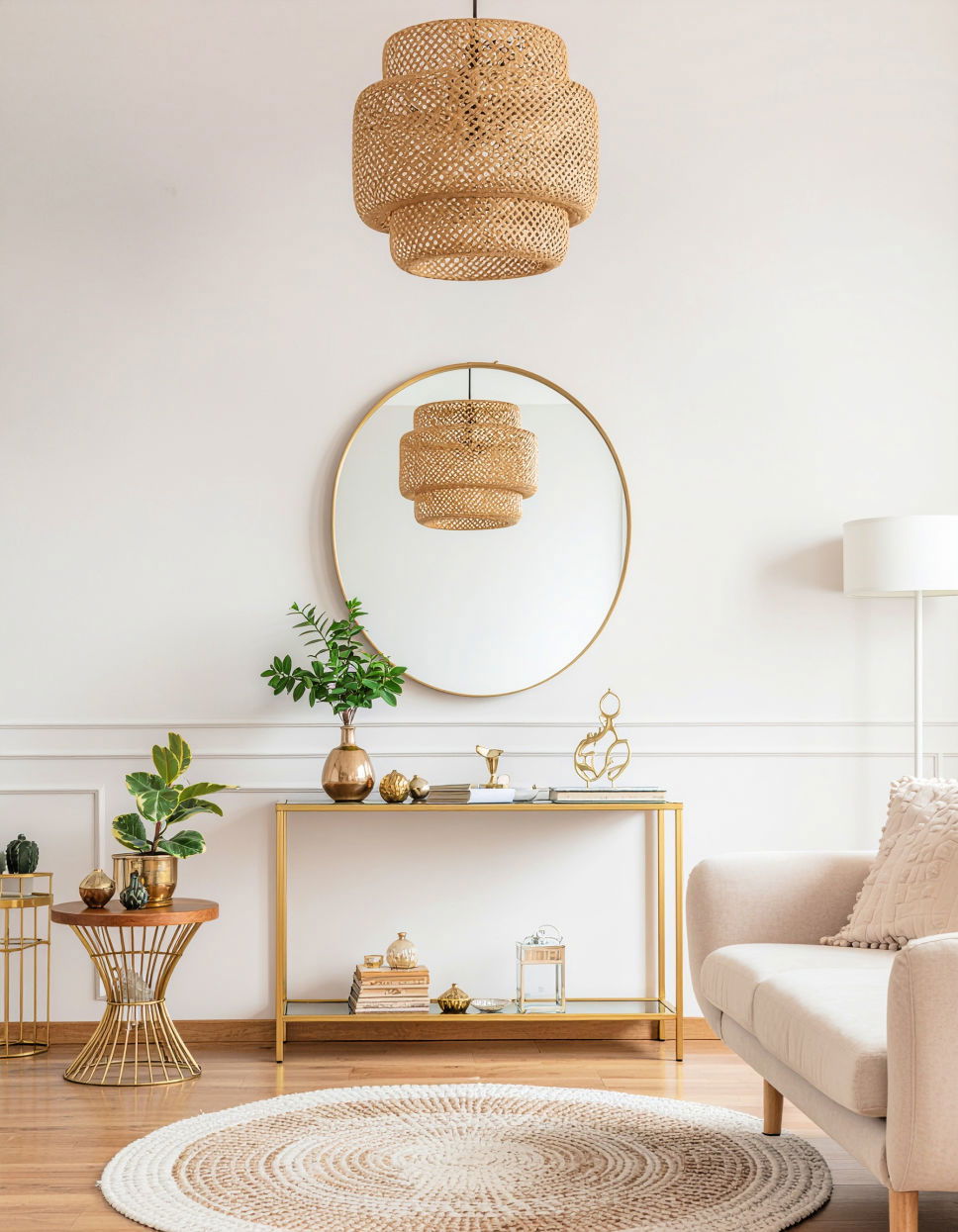
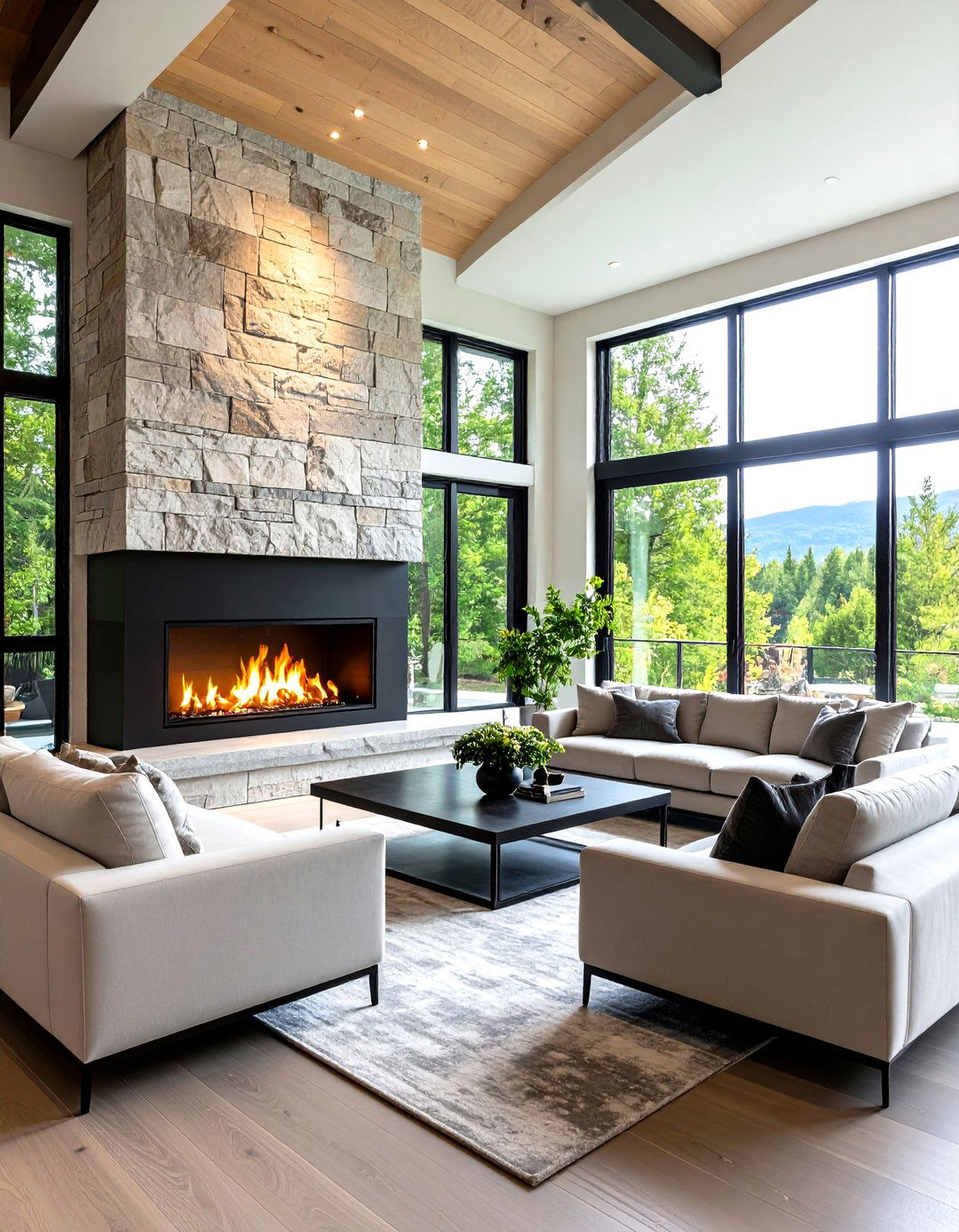
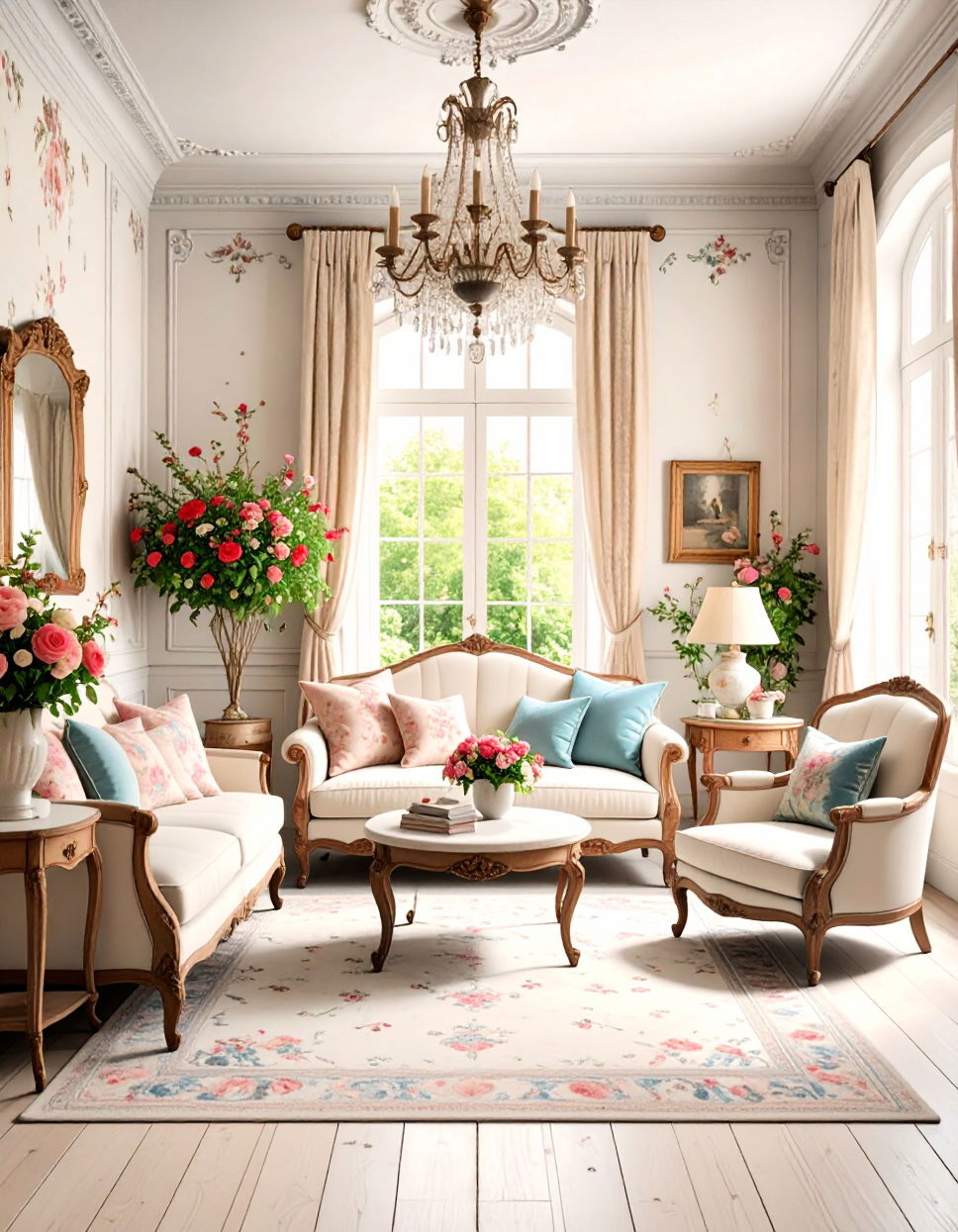
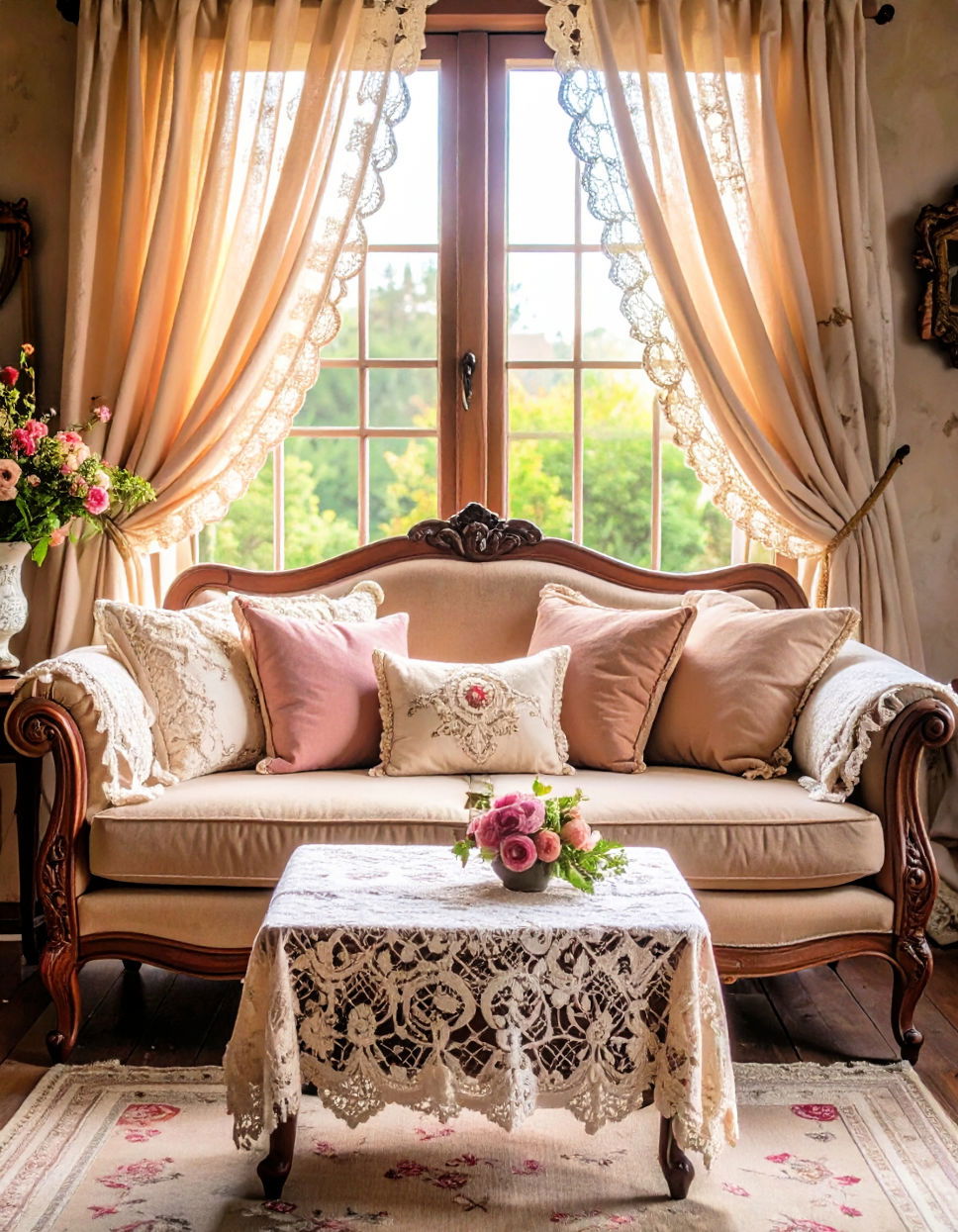
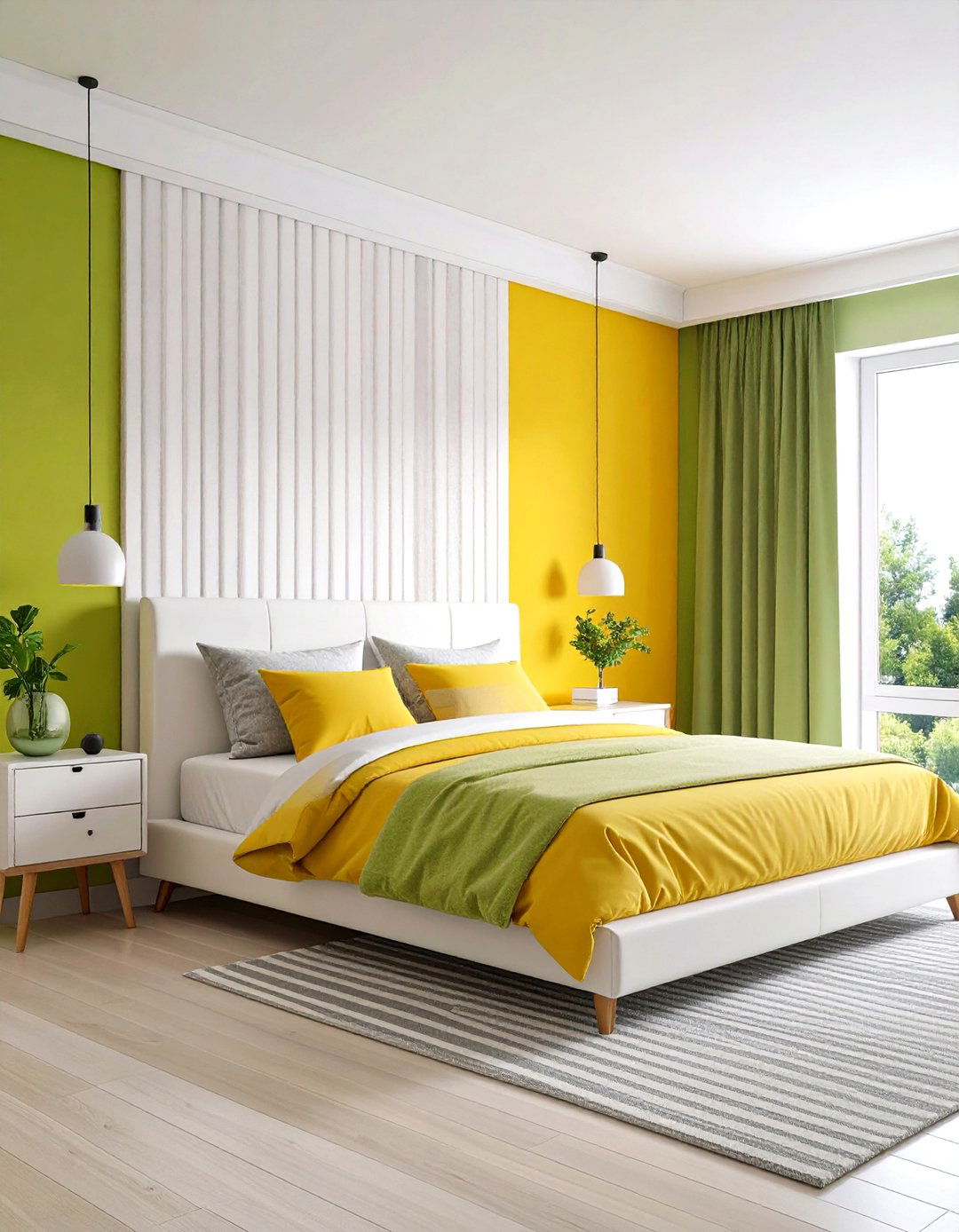
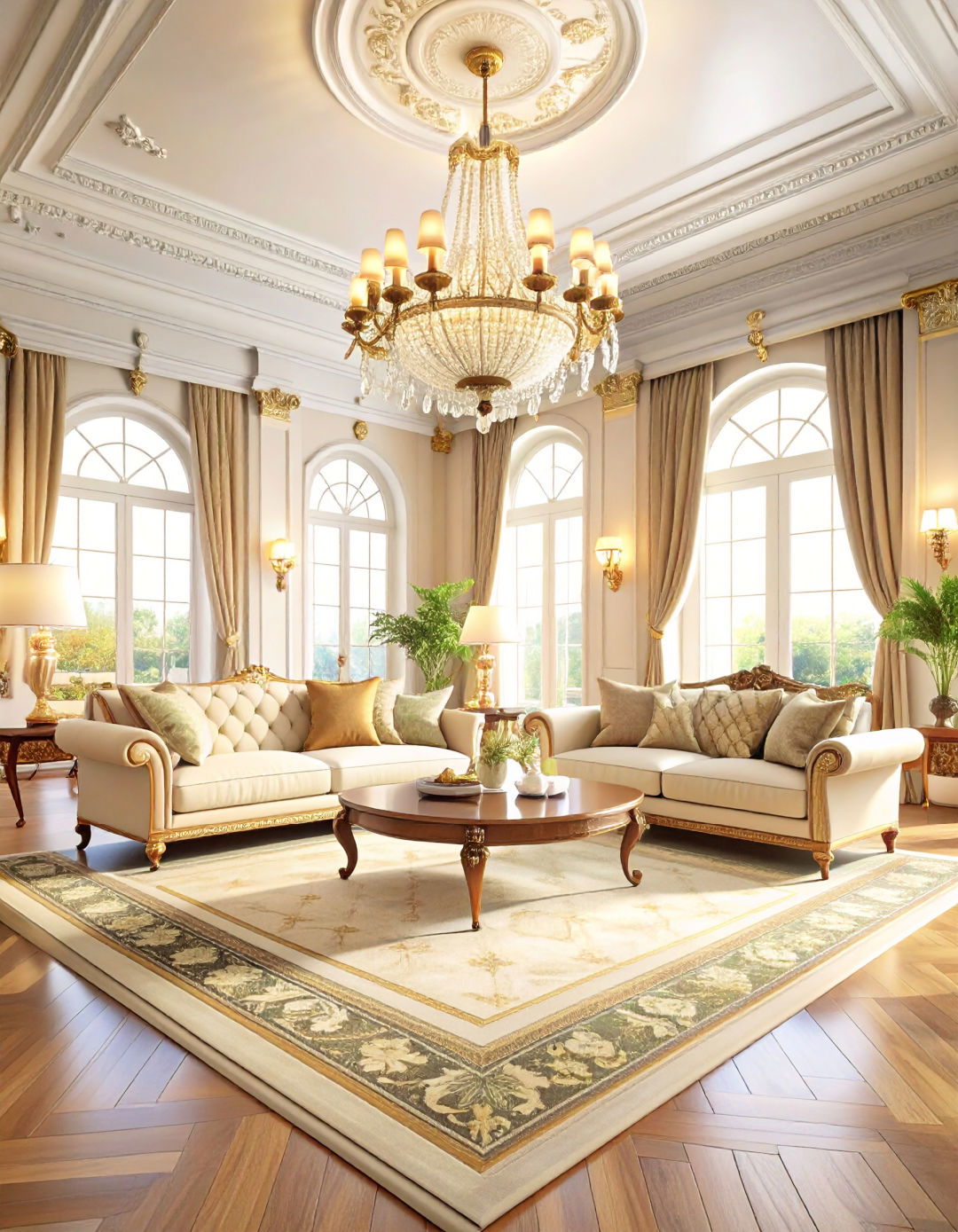
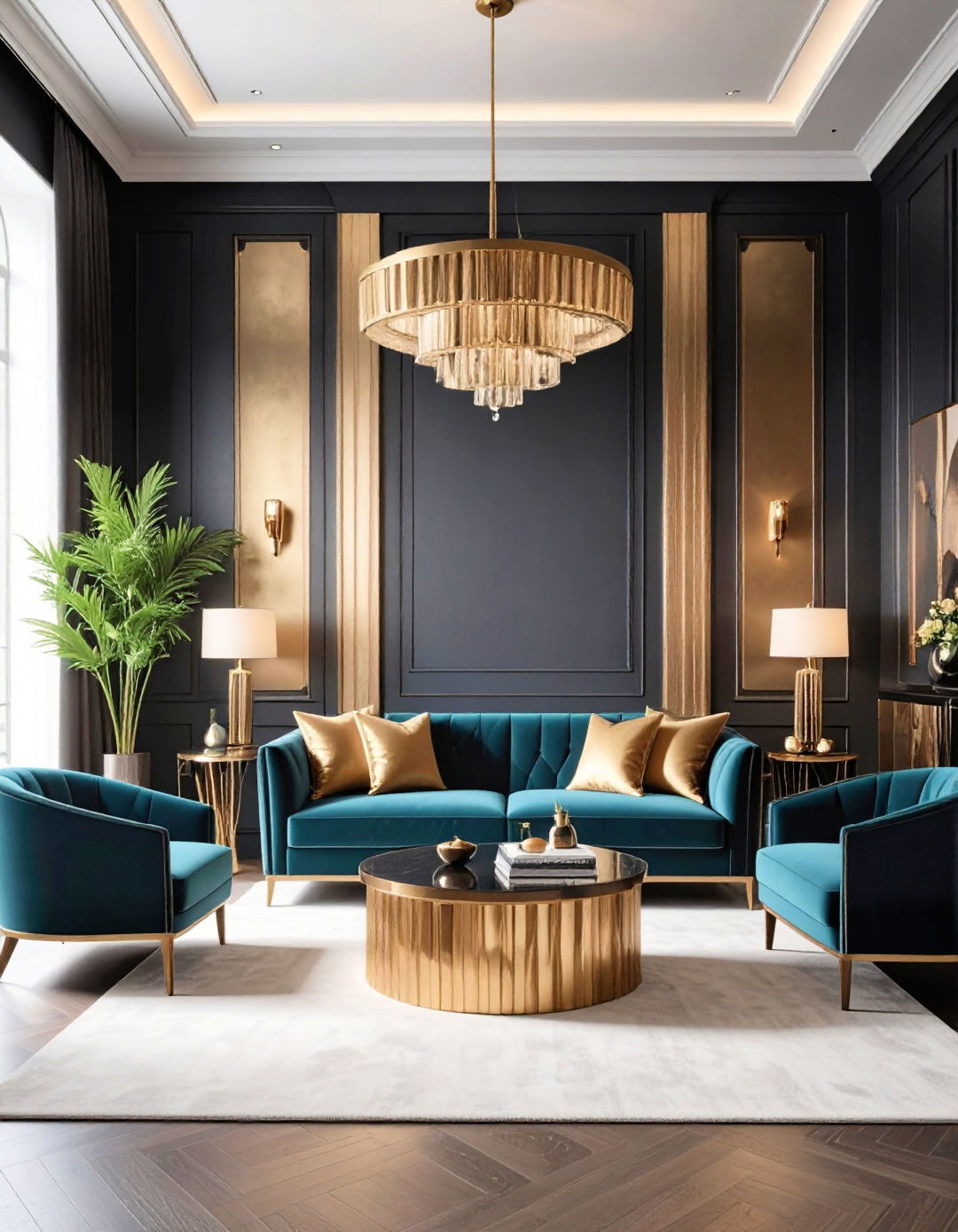
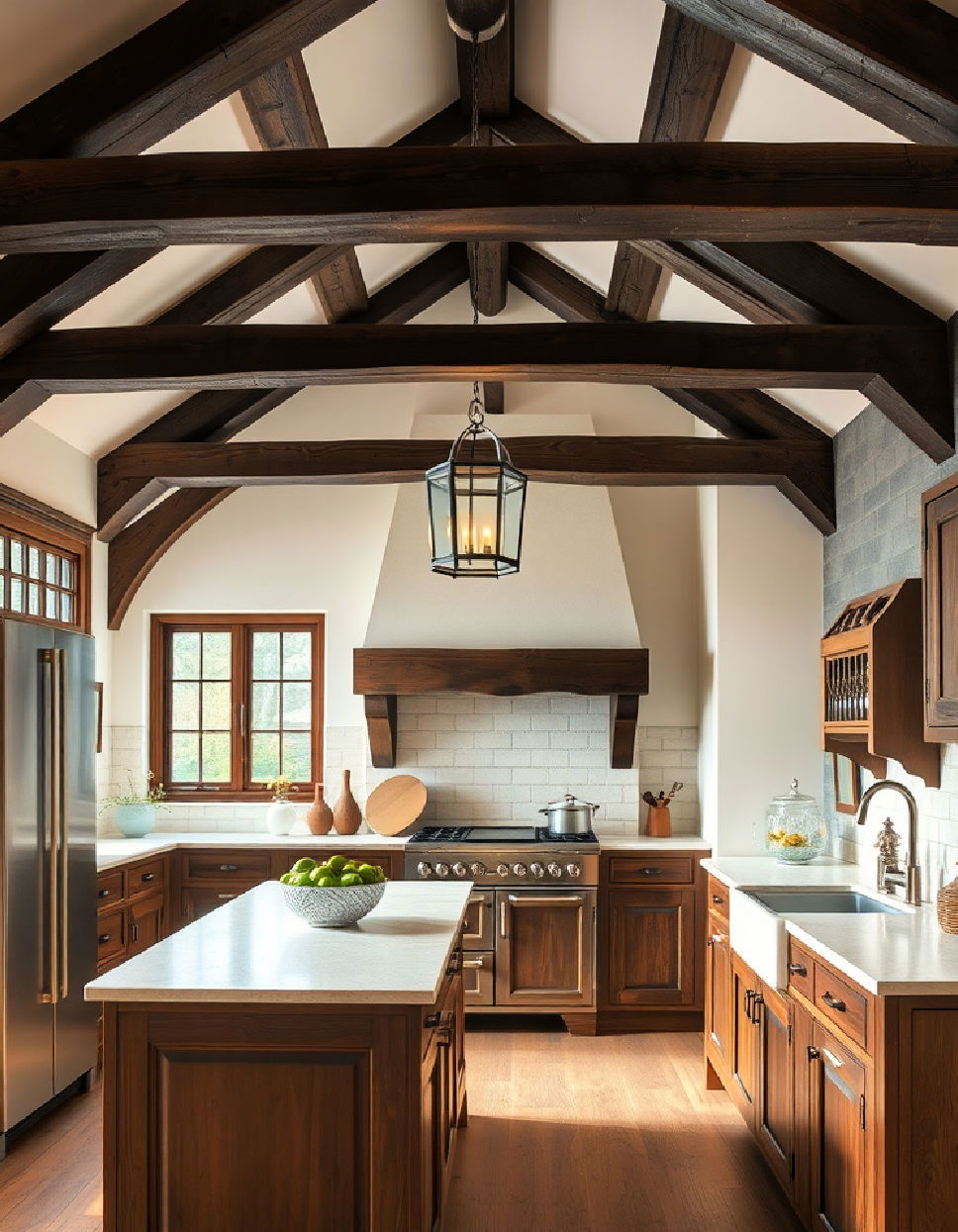
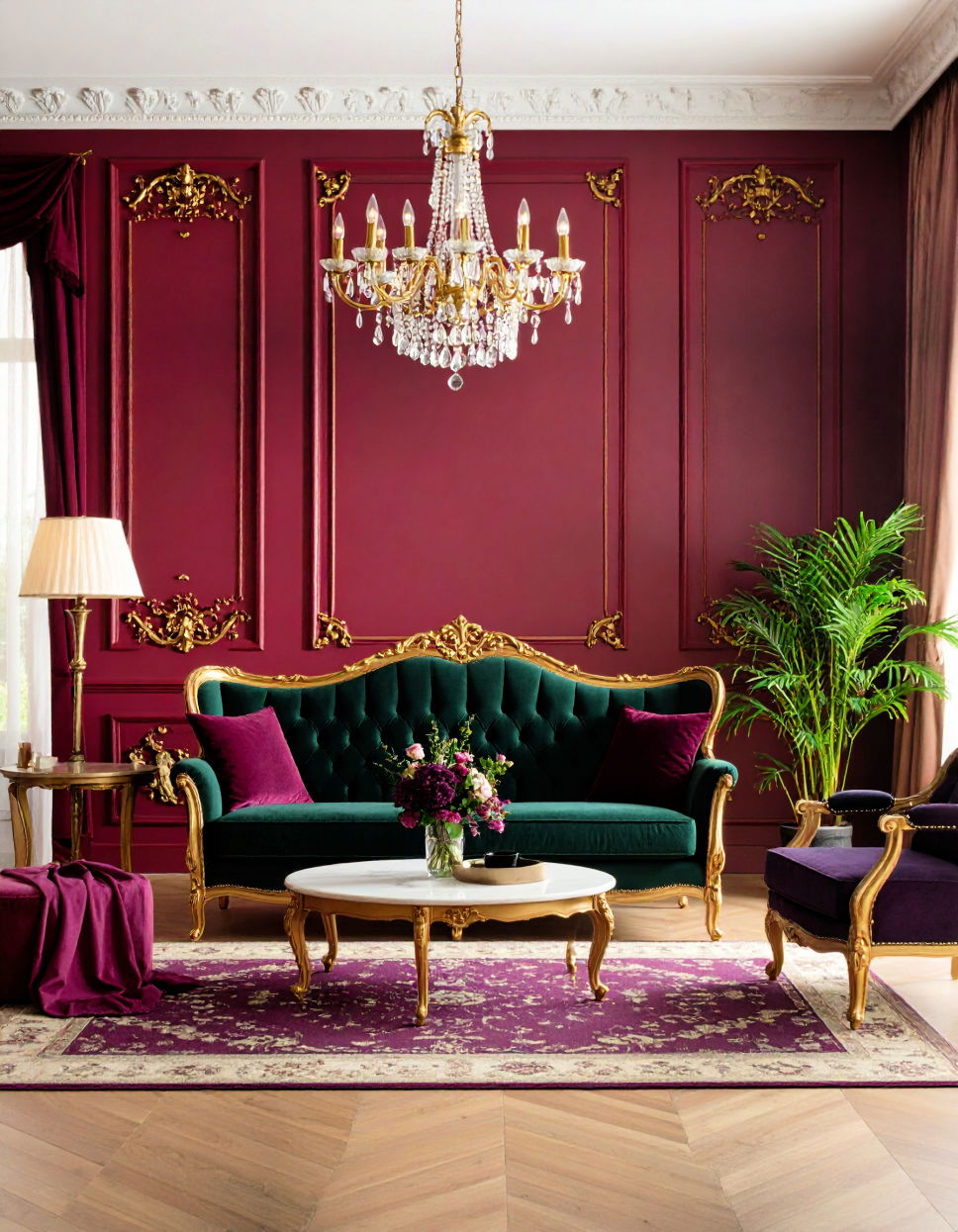

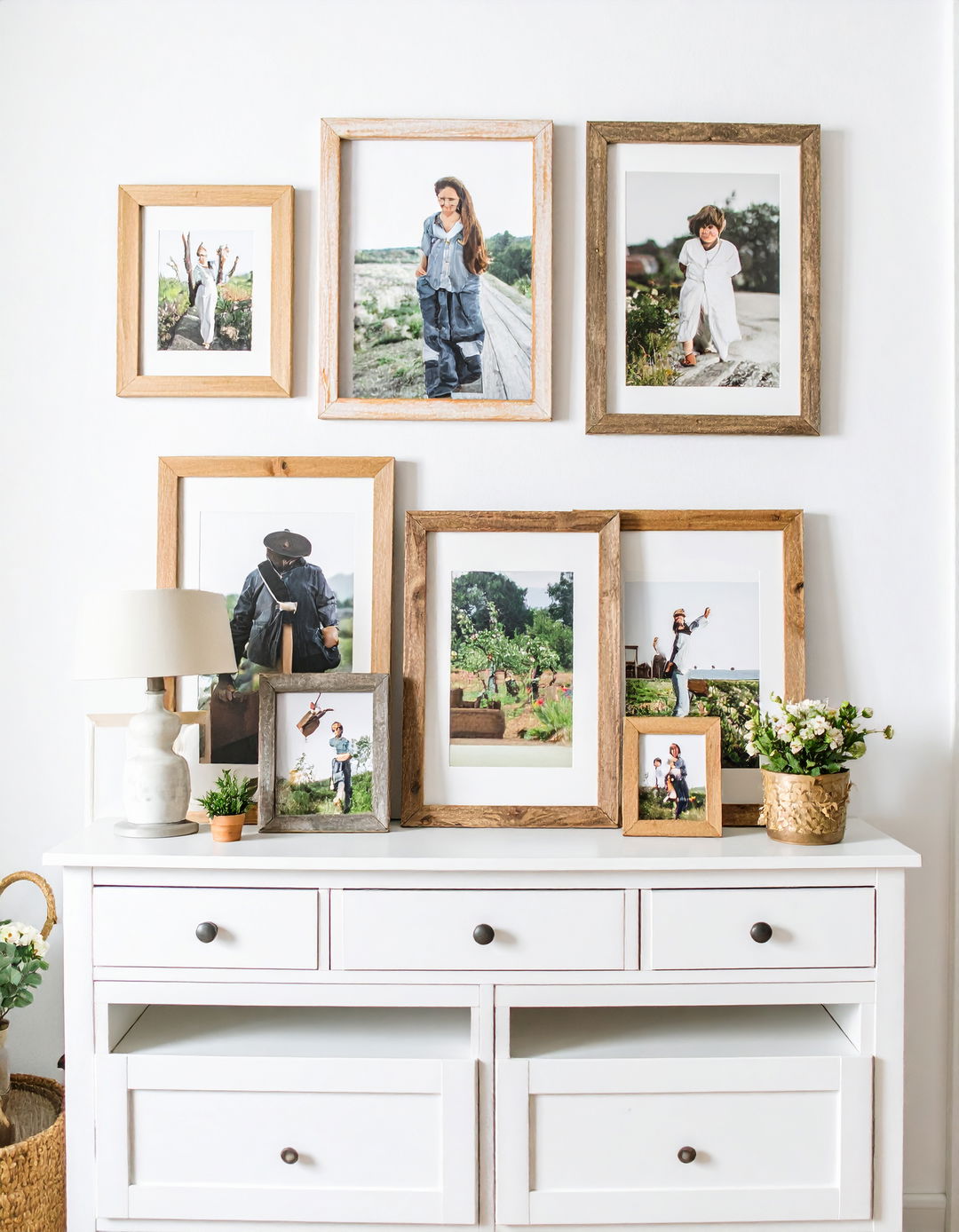
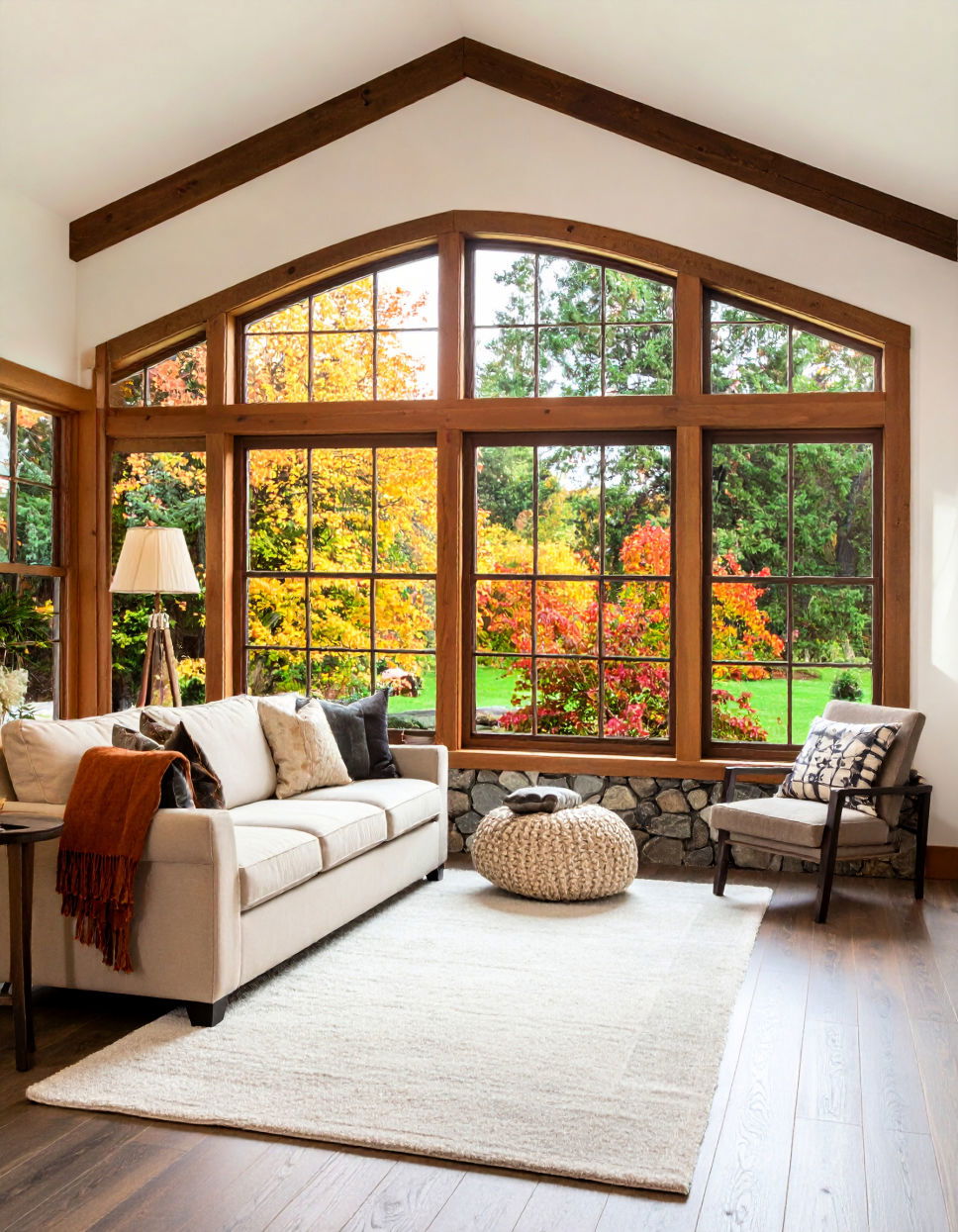
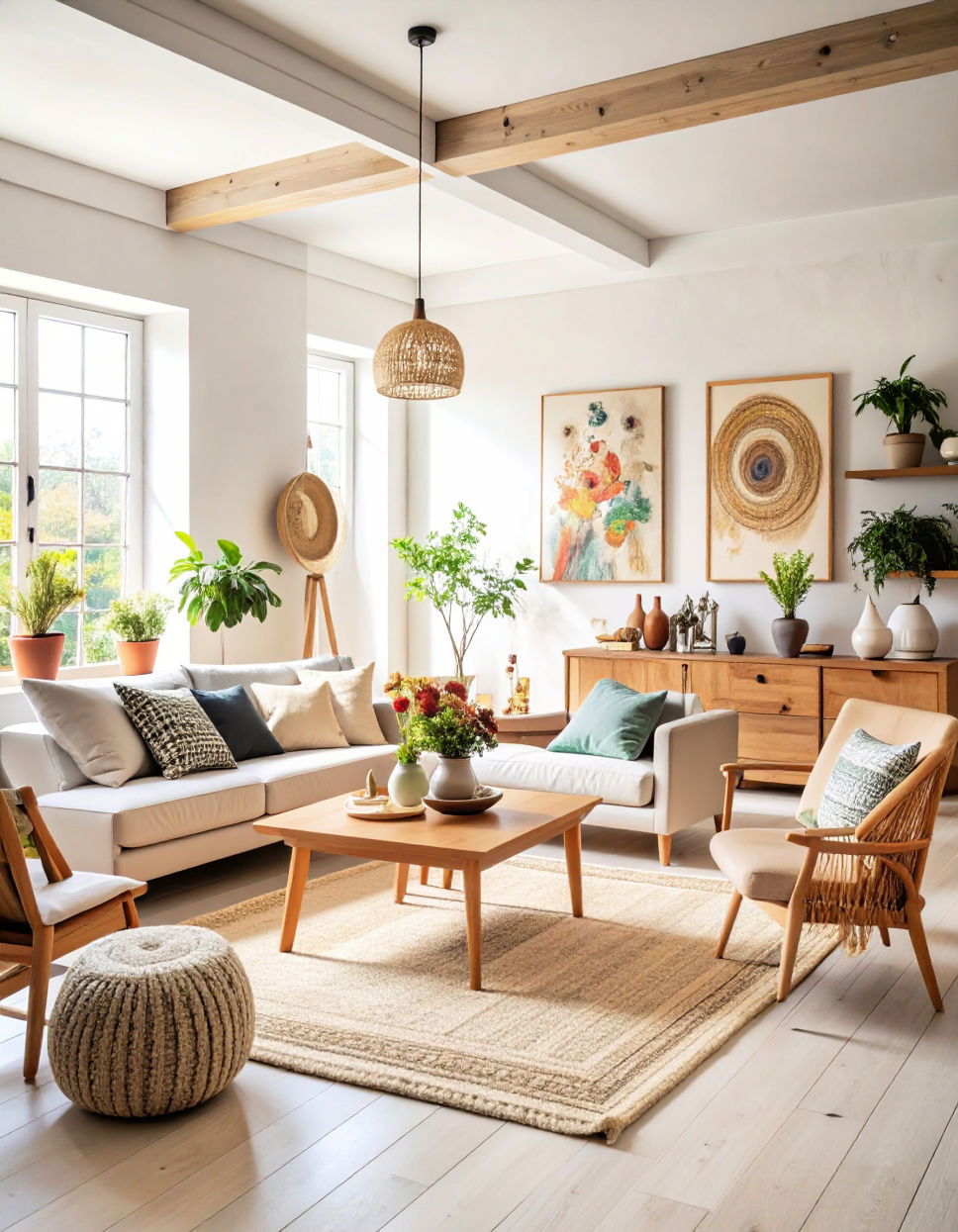
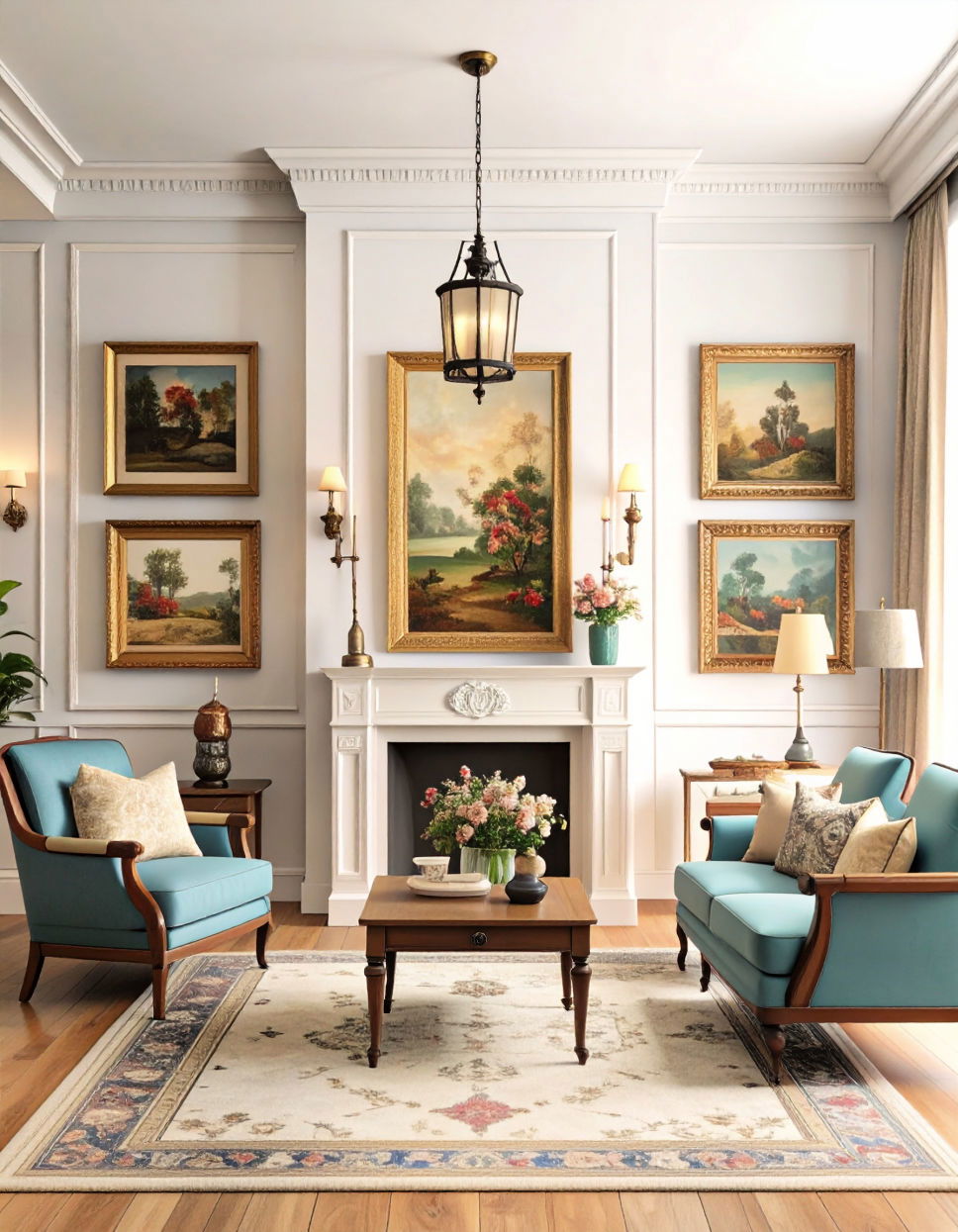
Leave a Reply